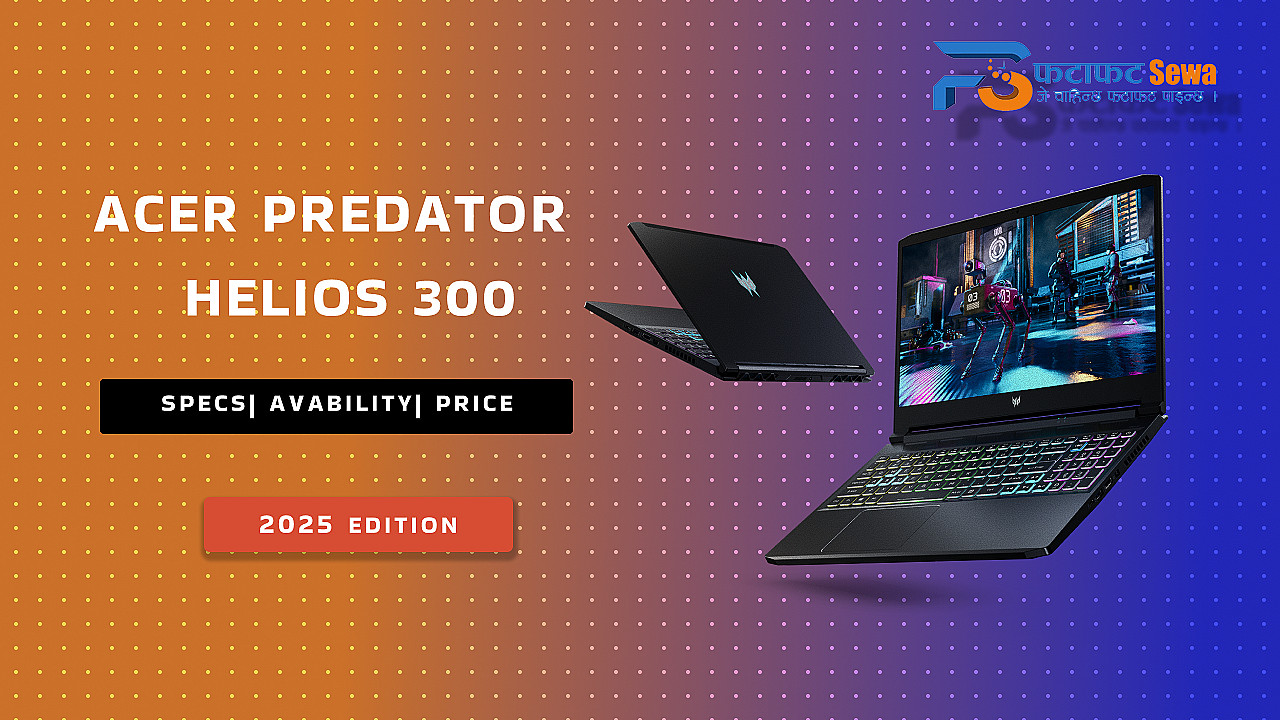
The Evolution of the iPhone: Every Model from 2007–2021
Ever wondered "What was the first iPhone released" or "When did the first iPhone debut?"The complete history of the iPhone is available right here. This article will include information about all iPhones, from the oldest to the newest, as well as details about the iPhone's history and technological advancements over time.2020 marks the 13th anniversary of the iPhone's first release. We will celebrate this event by reviewing the evolution of iPhone models since 2007.
Did you know there's no iPhone 2? The iPhone 2 was not released after Apple introduced the first-generation iPhone. It was all about 3G internet connectivity. But what about the iPhone 9? Well, Apple skipped right over that as well and went straight into the iPhone X. Over the years, Apple has released twenty iPhones, including the iPhone 3, iPhone 4, iPhone 5, and iPhone Plus models. The latest iPhone 12 line, as well as the iPhone SE (second-generation), have also been available. This is a comprehensive look at every iPhone evolution starting with the unveiling of the original iPhone by Steve Jobs. In just one minute per day, master your iPhone.
Subscribe to iPhone Life's Tip Of The Day Newsletter to receive a tip every day. We'll save you time and help you get the most from your iPhone or iPad. If you want to take a look at the Price of the latest iPhones in Nepal then go through our website Fatafat sewa.
Different Models of iPhones are:
iPhone: June 29, 2007
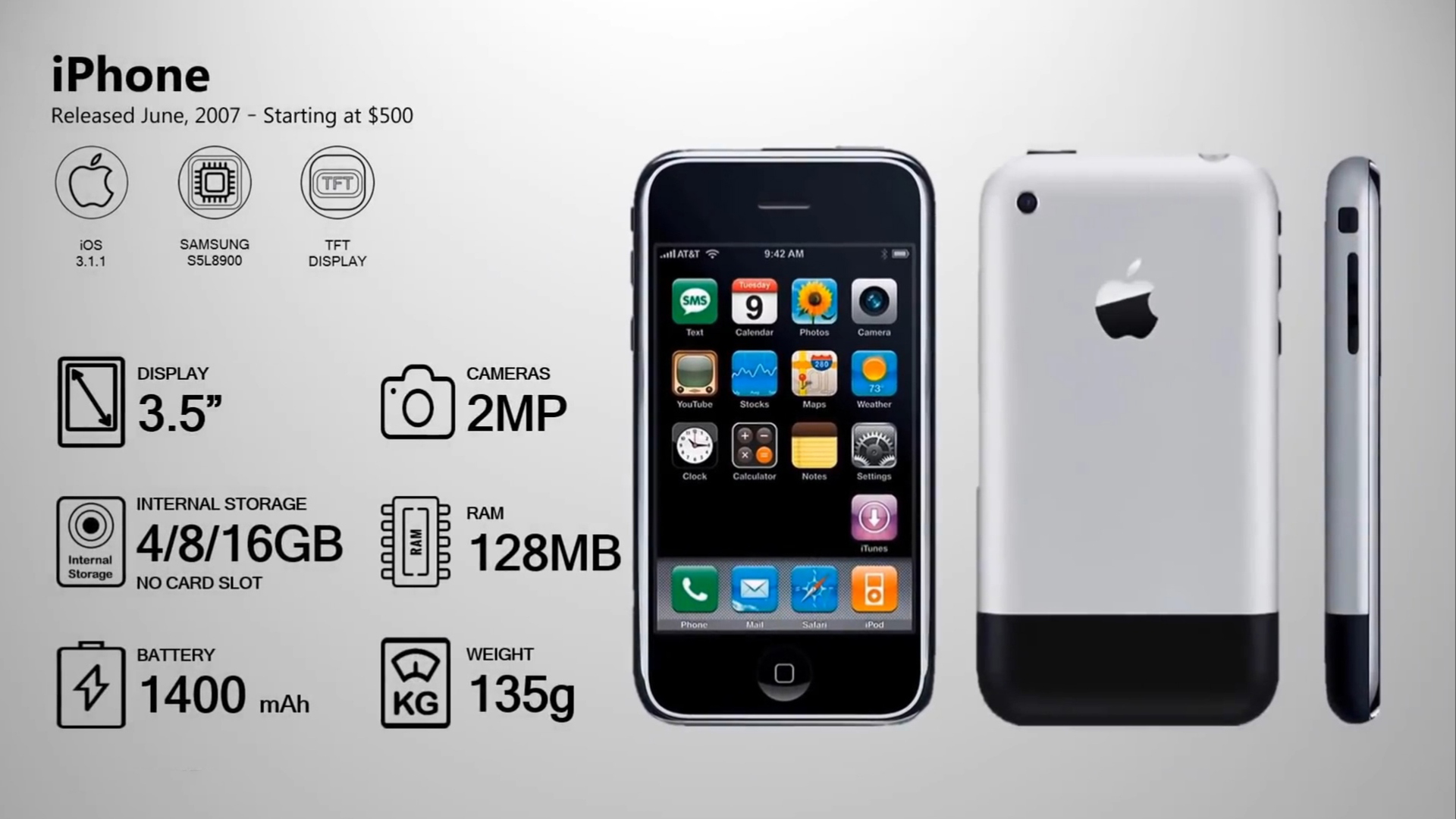
You wouldn't believe that 16GB was all you could fit on an original iPhone.The iPhone didn't have nearly as much data and there was no App Store. You could still see the internet on the screen, which was different from the slider and flip phones. It could only store 128 MB. It had a 2.0-megapixel camera. This was terrible. It was a phone with a camera, though! Holy moly!
iPhone 3G: July 11, 2008
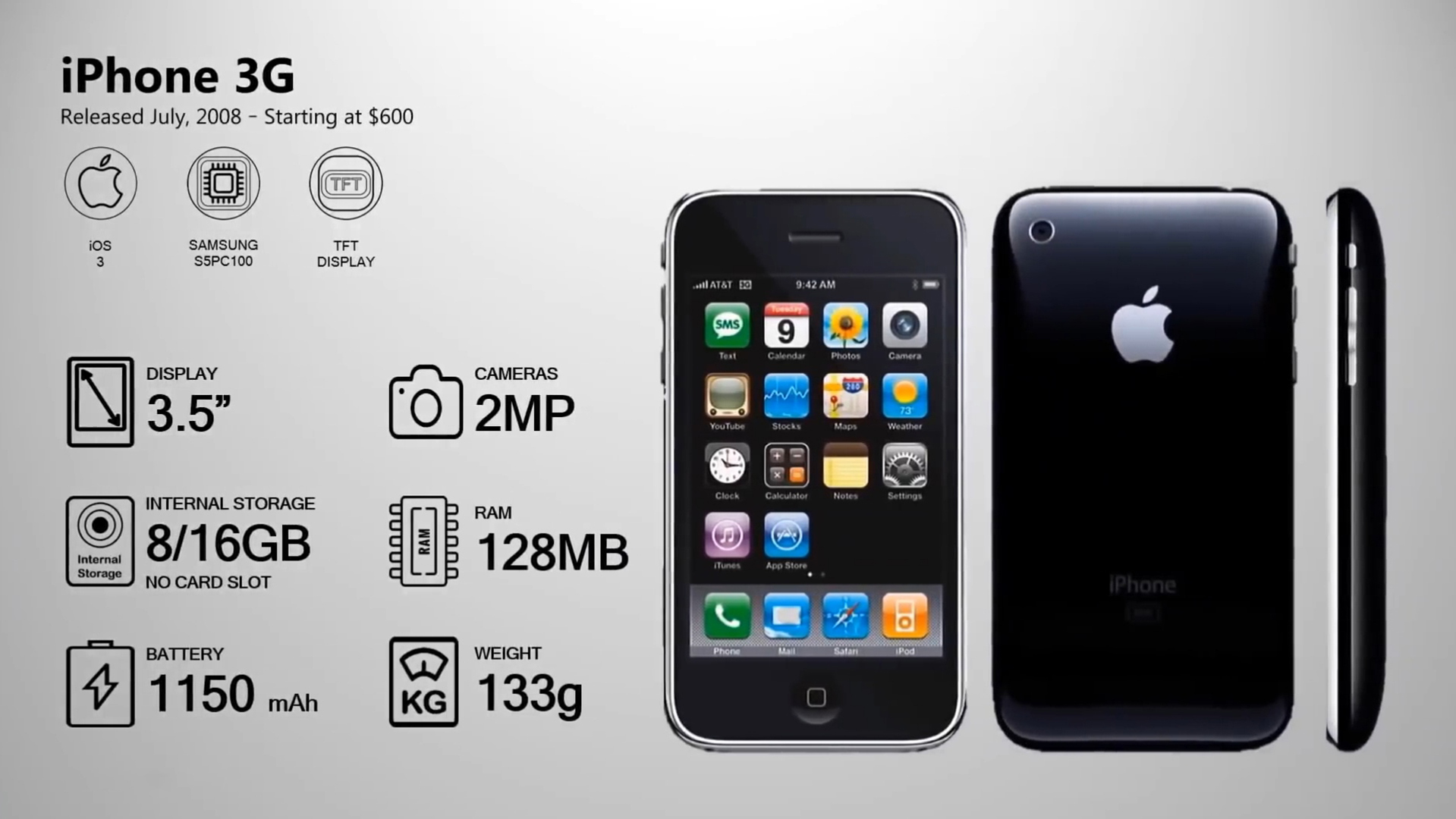
The iPhone 3G was very similar to the original iPhone in terms of internal specs. There was now an App Store! The iPhone's 3G connectivity was what gave it its name. This allowed you to access the internet without having to move the iPhone around.
iPhone 3GS: June 19, 2009
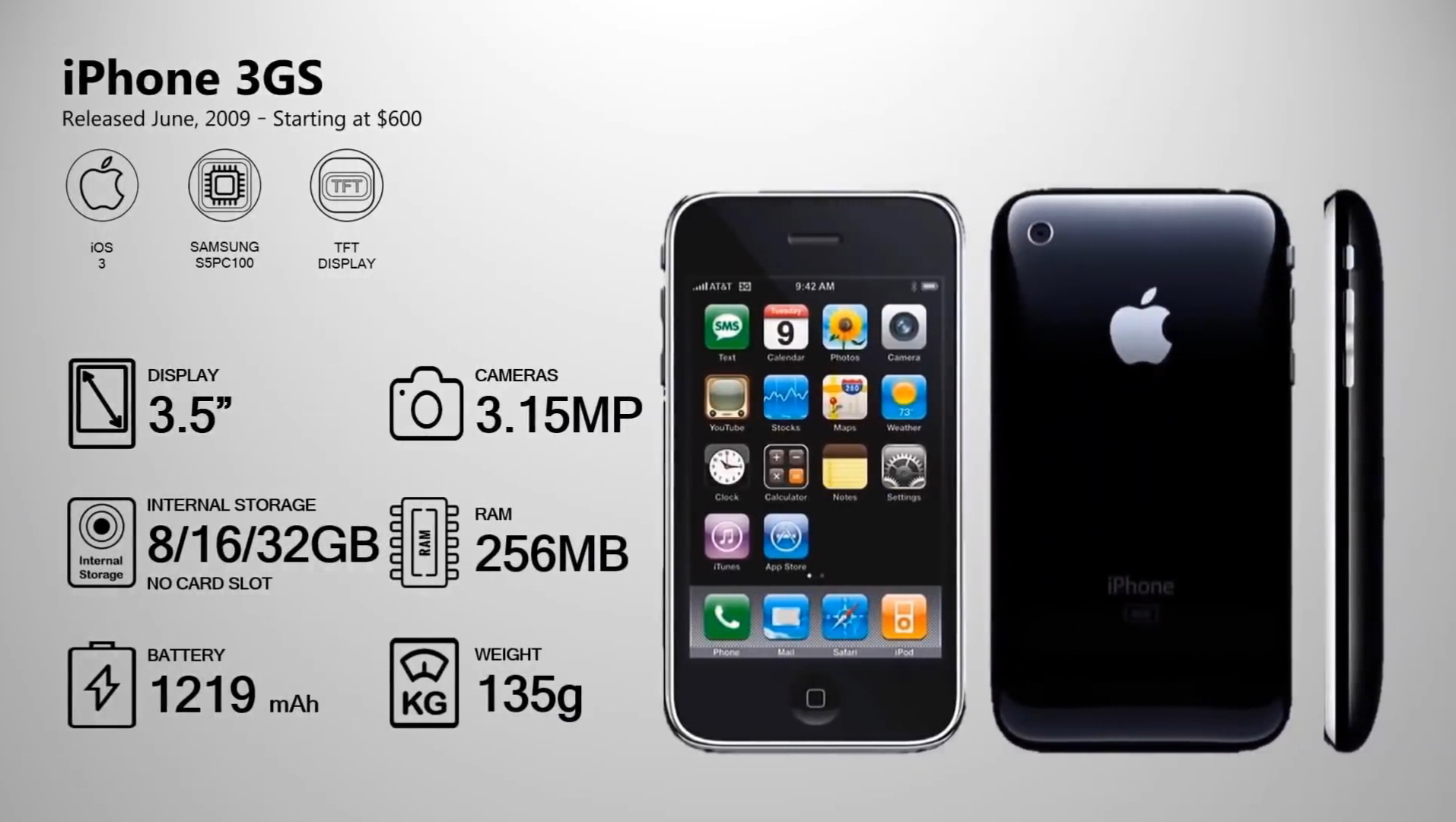
Apple's 32GB storage option was added to the iPhone 3GS. This doubles the amount of the original iPhone.The App Store was a major change in the way things work.16GB was not enough for photos, music, or apps. The camera received an upgrade to 3MP and video recording. Apple also introduced Voice Control, but we would have to wait for Siri's introduction.
iPhone 4: June 24, 2010
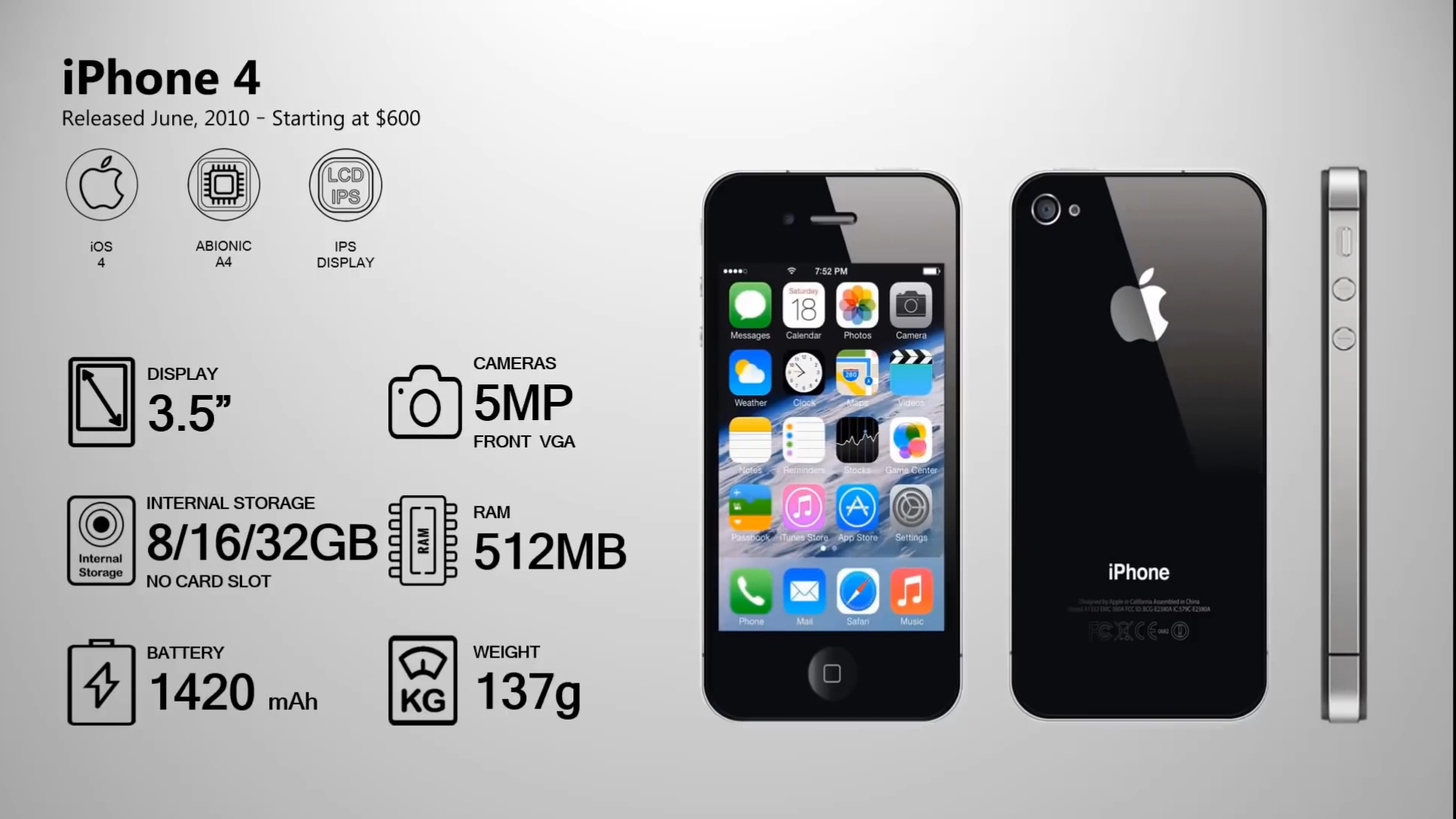
We are getting there. The iPhone 4 was the first iPhone with a front-facing camera. Apple didn't know that selfies would become the new trend in smartphone photography. Retina displays were also available on the iPhone 4. It was equipped with 512 MB memory and can handle more than the iPhone 3GS's 256 MB. Although the technology is starting to look more familiar, 32 GB was still the maximum storage that the iPhone could store.
iPhone 4S: October 14, 2011
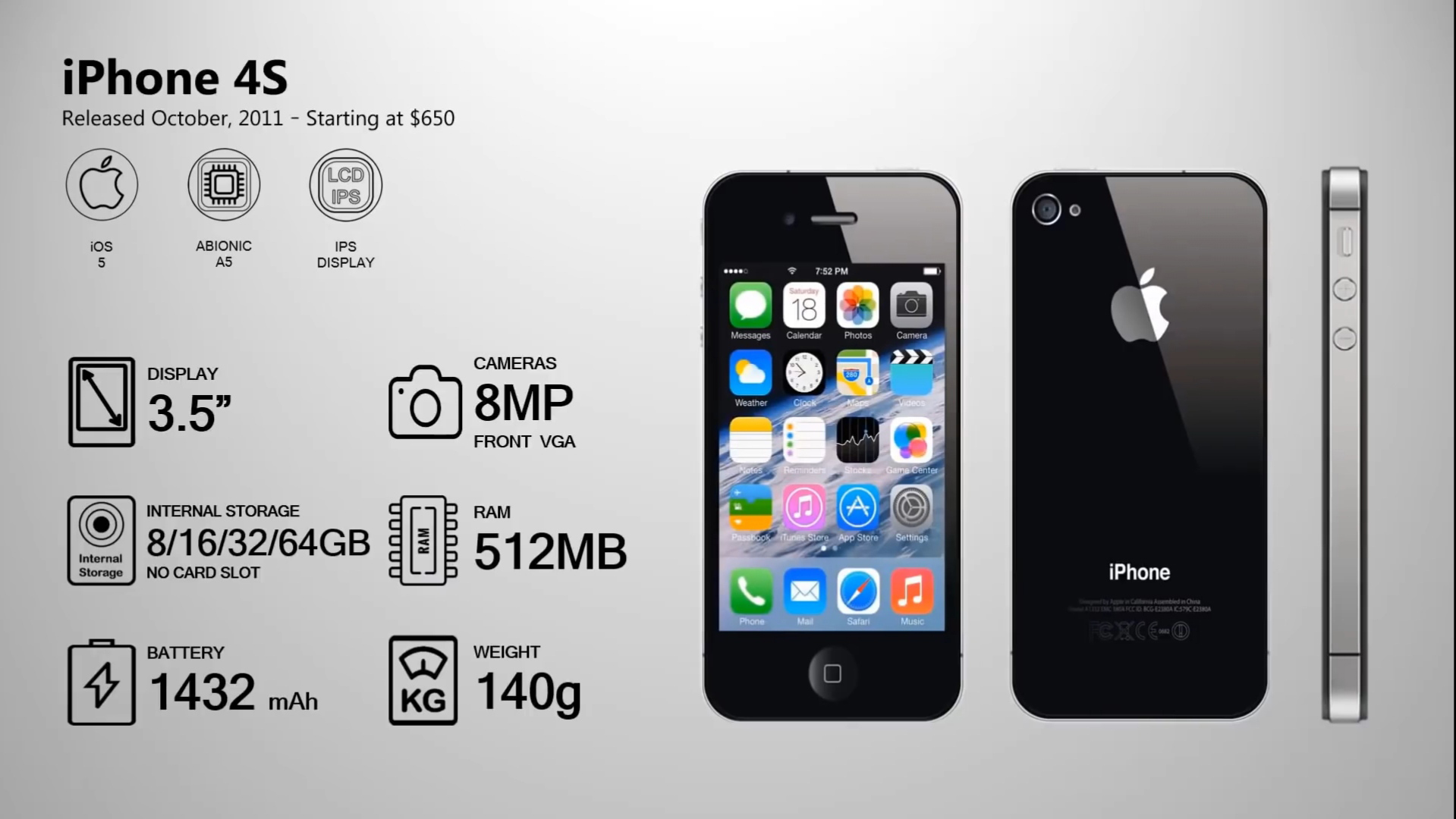
The iPhone 4S and iPhone 4S have a vast difference in camera quality: the iPhone 4S's camera has a 5MP to 8MP sensor. That's an upgrade. Apple also offered 64GB storage, but the memory was kept at 512MB. Video could be recorded at 1080p. Oh, Siri, it's hard to forget! In its first week, Apple sold four million iPhone 4S units.
iPhone 5: September 21, 2012
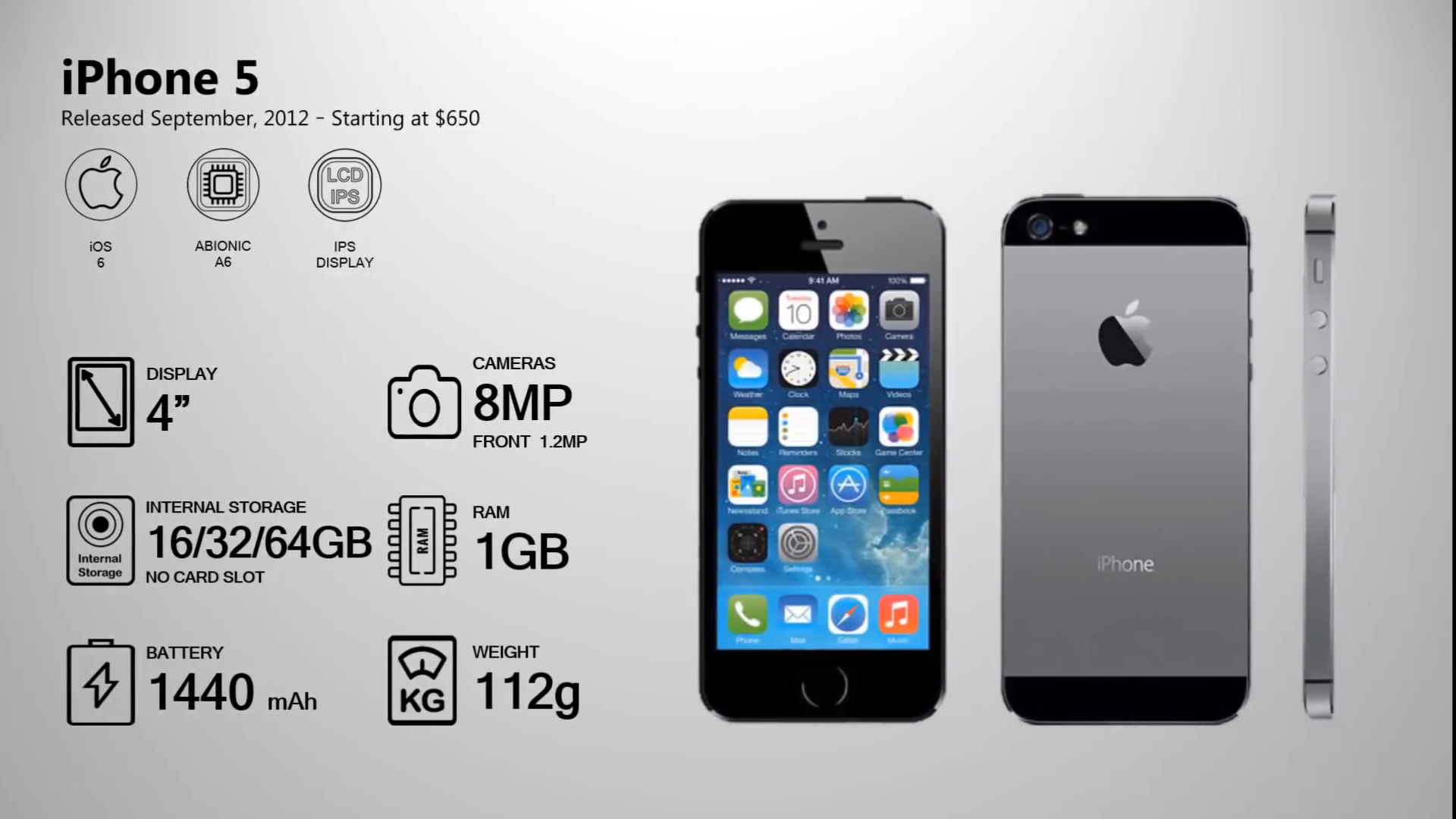
Apple sold 5,000,000 iPhone 5 units in its first week. While the camera was unchanged, the memory was increased to 1GB.3G seemed cool, right? The iPhone 5 was equipped with LTE connectivity. Internet everywhere! Apple also introduced Lightning connectors with the iPhone 5. The screen is now larger than ever before! The iPhone 5's display is 4 inches.
iPhone 5s & iPhone 5c: September 20, 2013
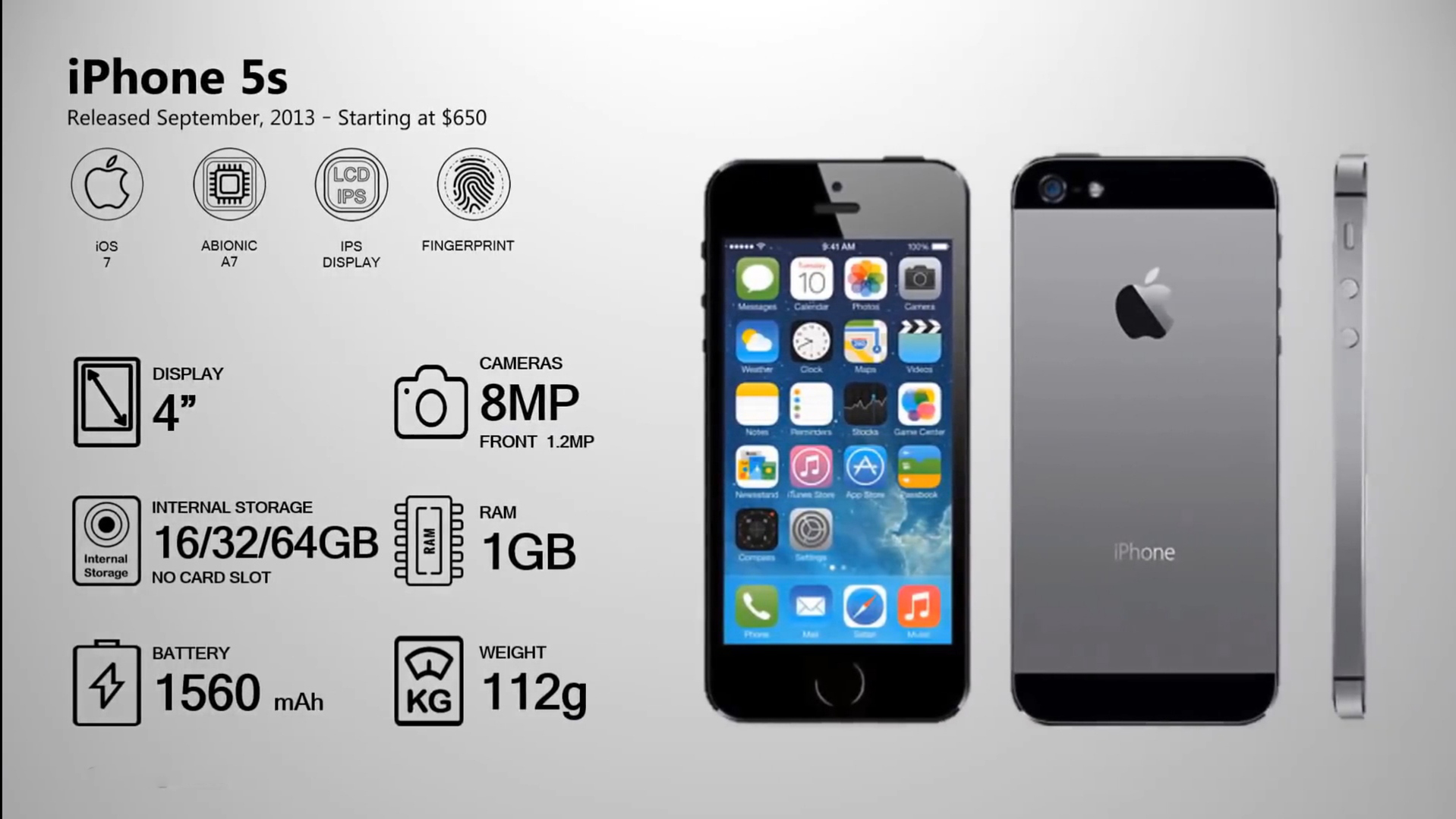
In the first week, Apple sold nine million units between the iPhone 5s & the iPhone 5c. The iPhone 5c was slightly cheaper and came with a plastic shell. The iPhone 5c was available in four colors but there was not much else. The iPhone 5s introduced Touch ID, dual flash, and slow-motion video. It also included the M7 motion processor, which opened up new possibilities and helped to save battery life.

iPhone 6 & 6 Plus: September 19, 2014
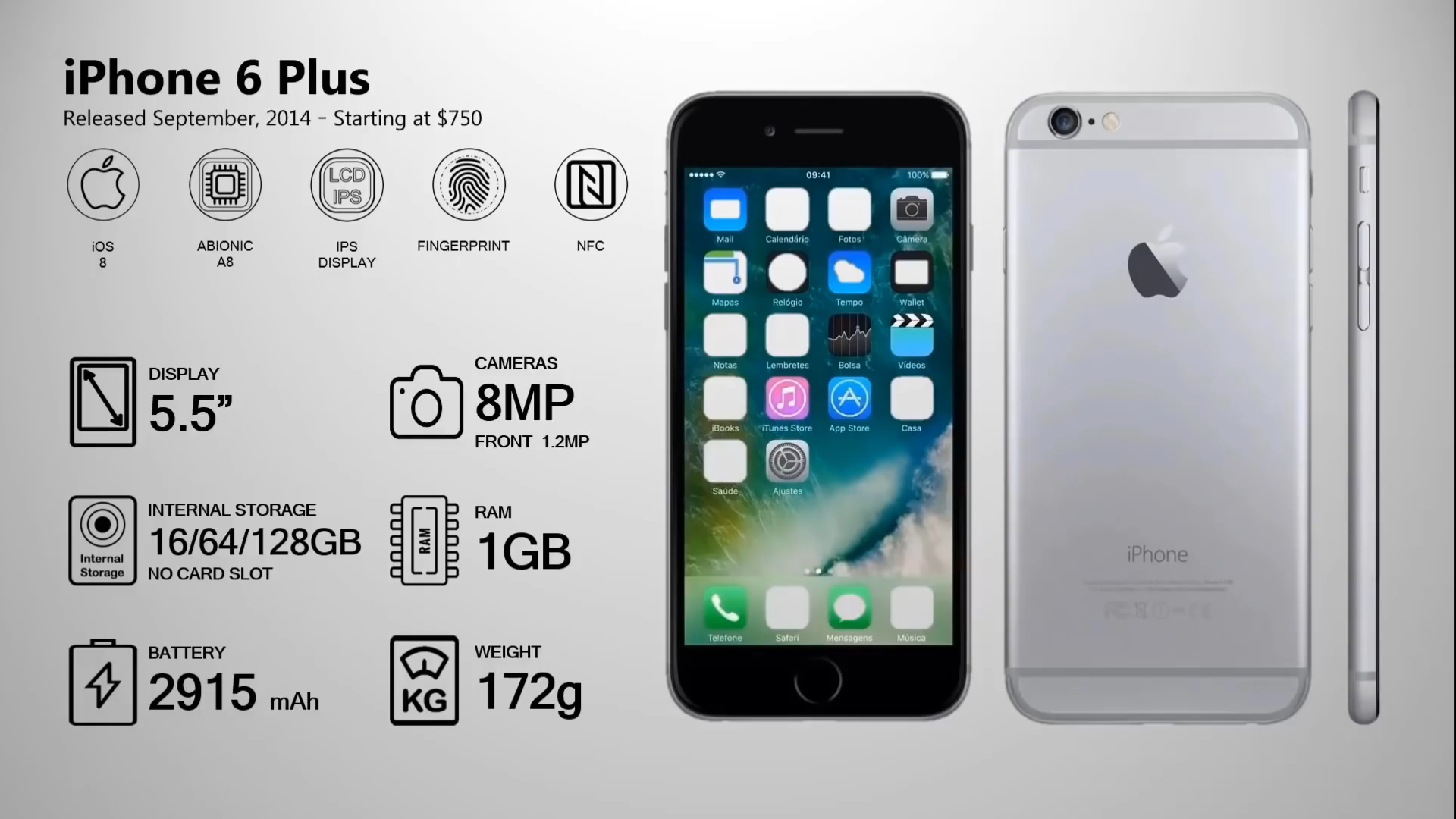
Apple tends to make greater leaps between the original model, and the S-edition than it does between the S-edition to a new model. The iPhone 6's internal specifications were very similar to the iPhone 5s. The iPhone 6's screen was larger and the option to get the iPhone 6 Plus in a larger size.HD was added to the Retina display, and an iPhone with 128GB storage was available. The amount of memory was unchanged and the camera did not receive a megapixel upgrade. It didn't matter: Apple sold 10,000,000 units within the first week.
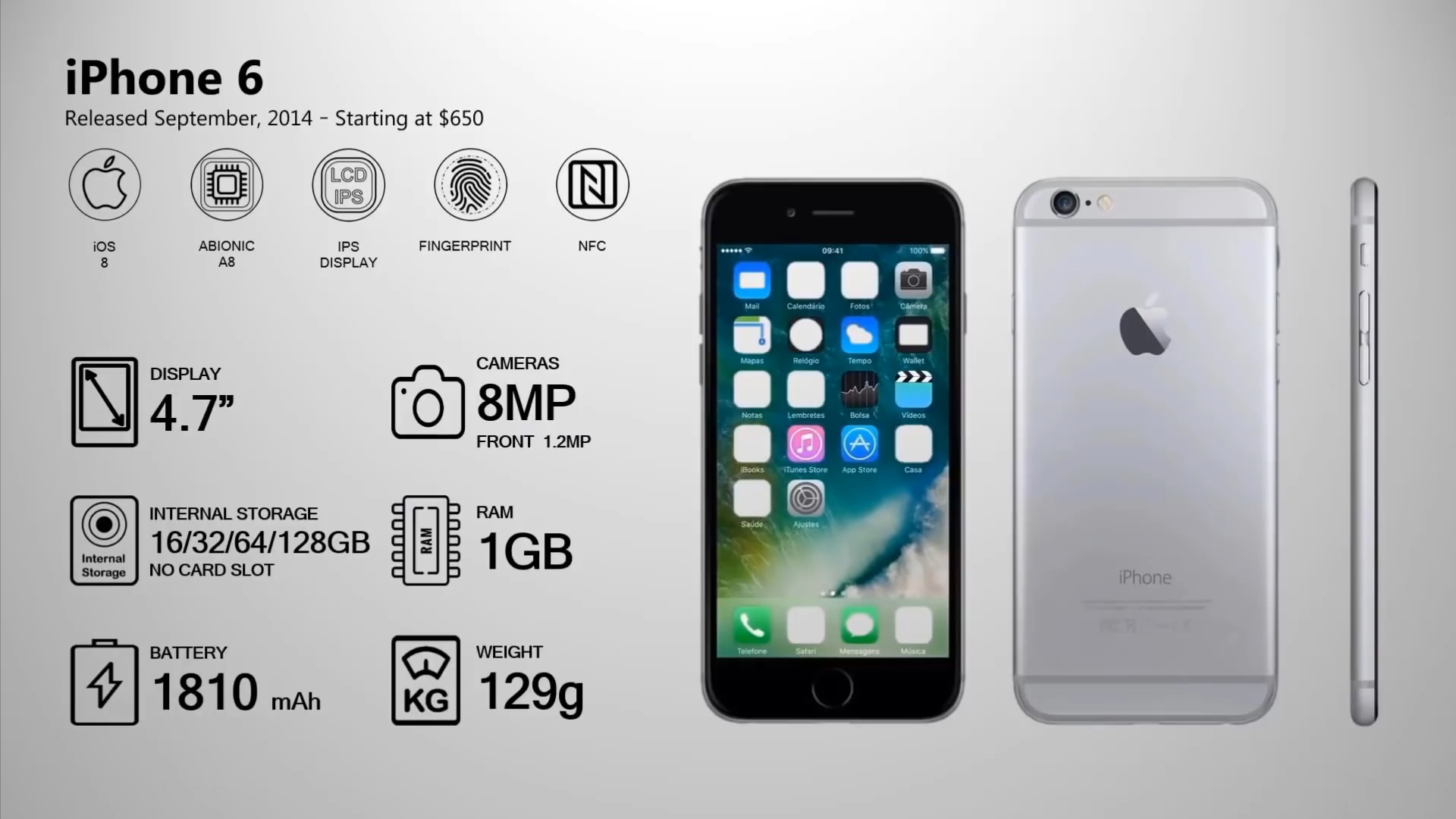
iPhone 6s & 6s Plus: September 19, 2015
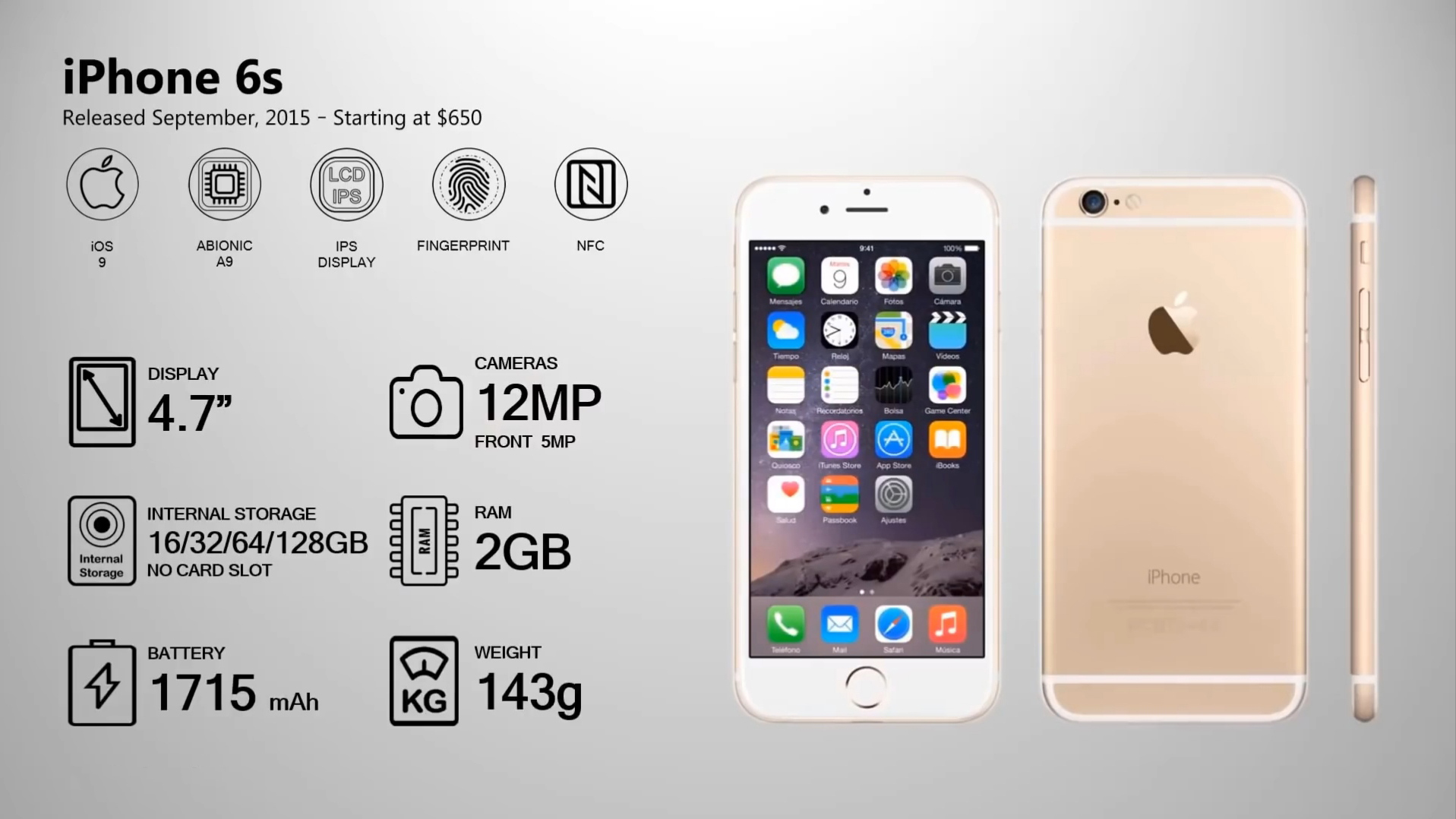
Everything was changed by the 6s. It was but it looked basically the same. Apple has made a significant upgrade to the iPhone 6s inside. The camera took a big leap forward, going from 8 MP to 12 MP. The memory was doubled, from 1 GB up to 2 GB.Apple also gave the iPhone 6s 7000 Series aluminum after the iPhone 6 suffered from bending problems (#bendgate).3D Touch was also introduced.
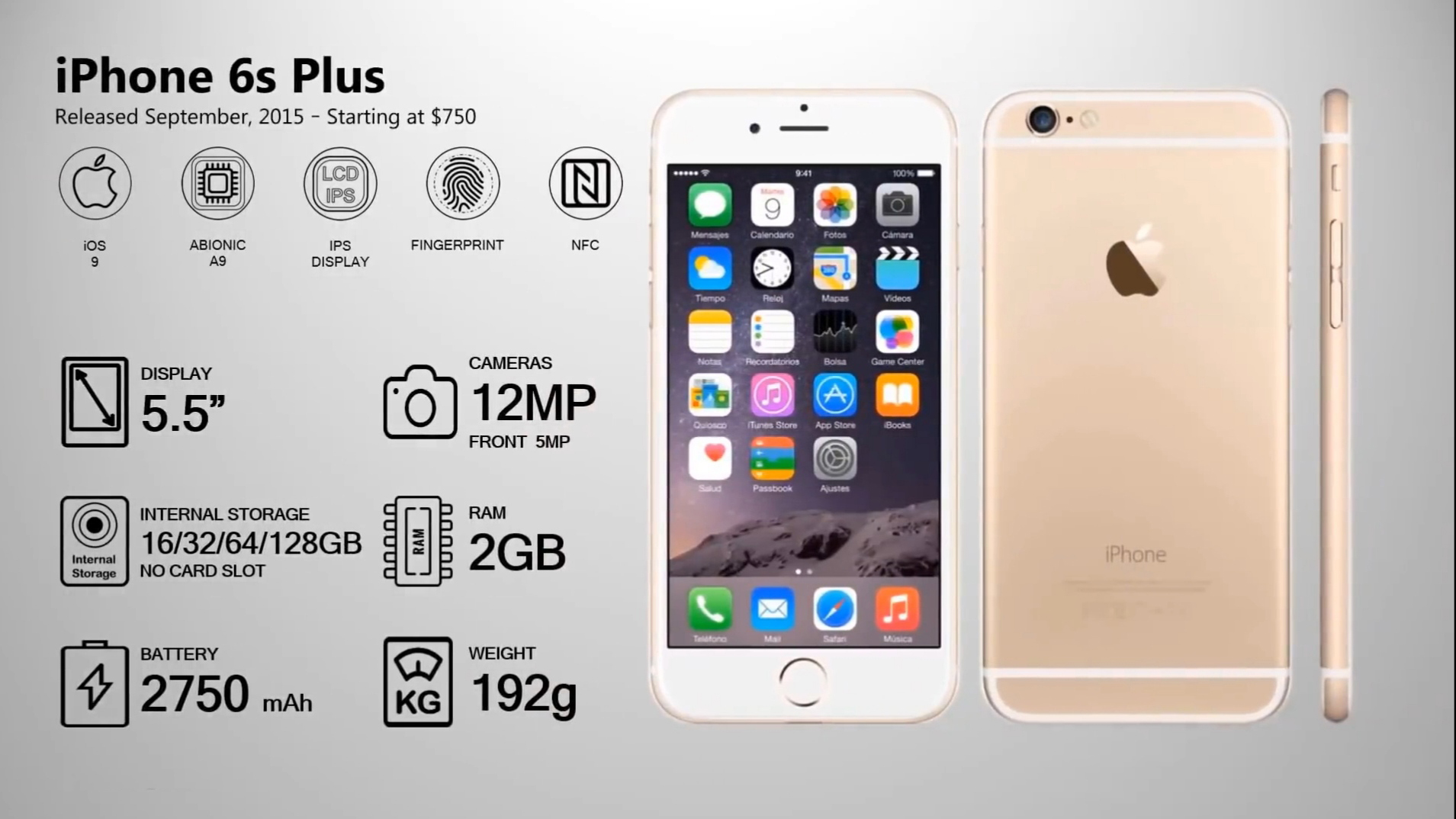
iPhone SE: March 31, 2016
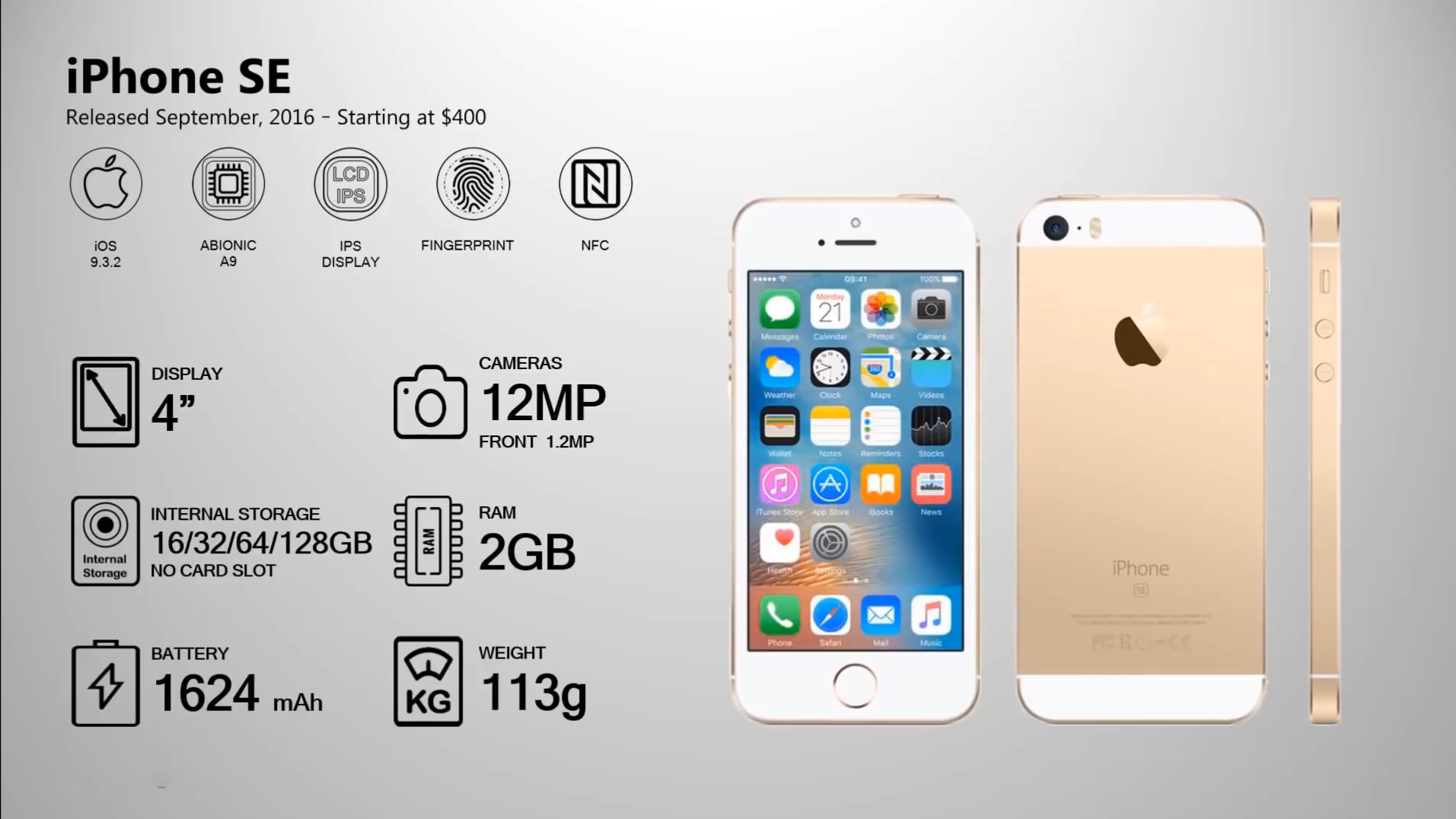
Don’t think I’ve forgotten the iPhone SE. It had all the awesome internal specs of the iPhone 6s in a small package and without 3D Touch. Overall, the iPhone SE was unveiled as an excellent less expensive choice.
iPhone 7 & 7 Plus: September 16, 2016
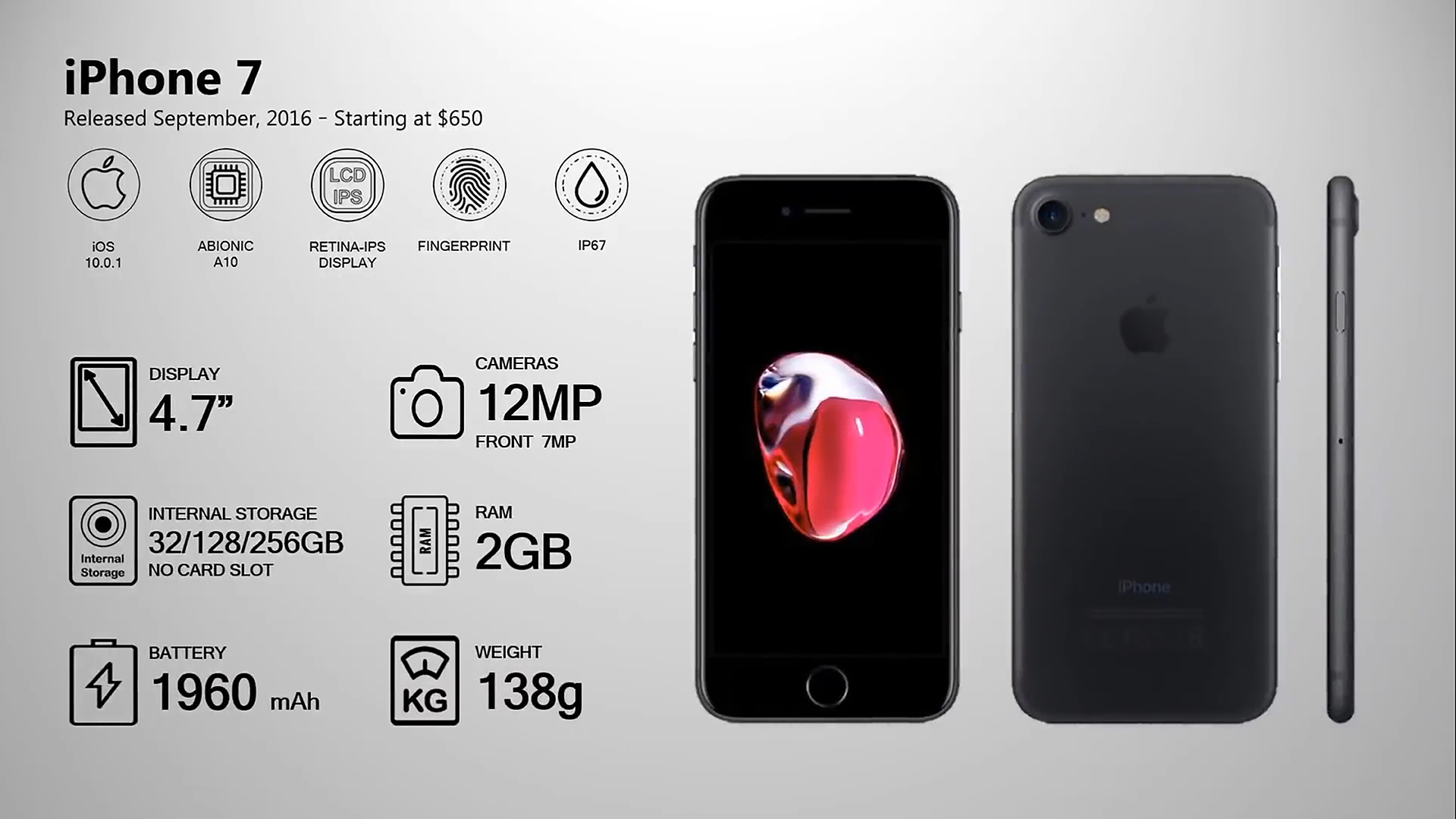
Apple has finally removed the 16GB base model option from its iPhone 7 and iPhone 7 Plus base models. The 32GB storage starts at 32GB and goes up to 256GB for iPhone 7 and 7 Plus. Apple introduced the new shiny Jet Black color. The iPhone 7 Plus was more popular than the previous Plus models because of its dual camera. This made it possible to take better photos with Depth-of-Field and Portrait modes. The most controversial feature of the iPhone 7/7 Plus was the removal of the headphone jack. The new iPhones came with EarPods, which plug into the Lightning port. They also come with an adaptor for traditional headphones. Apple's wireless AirPods were introduced at the same time that it announced the end of the headphone socket.
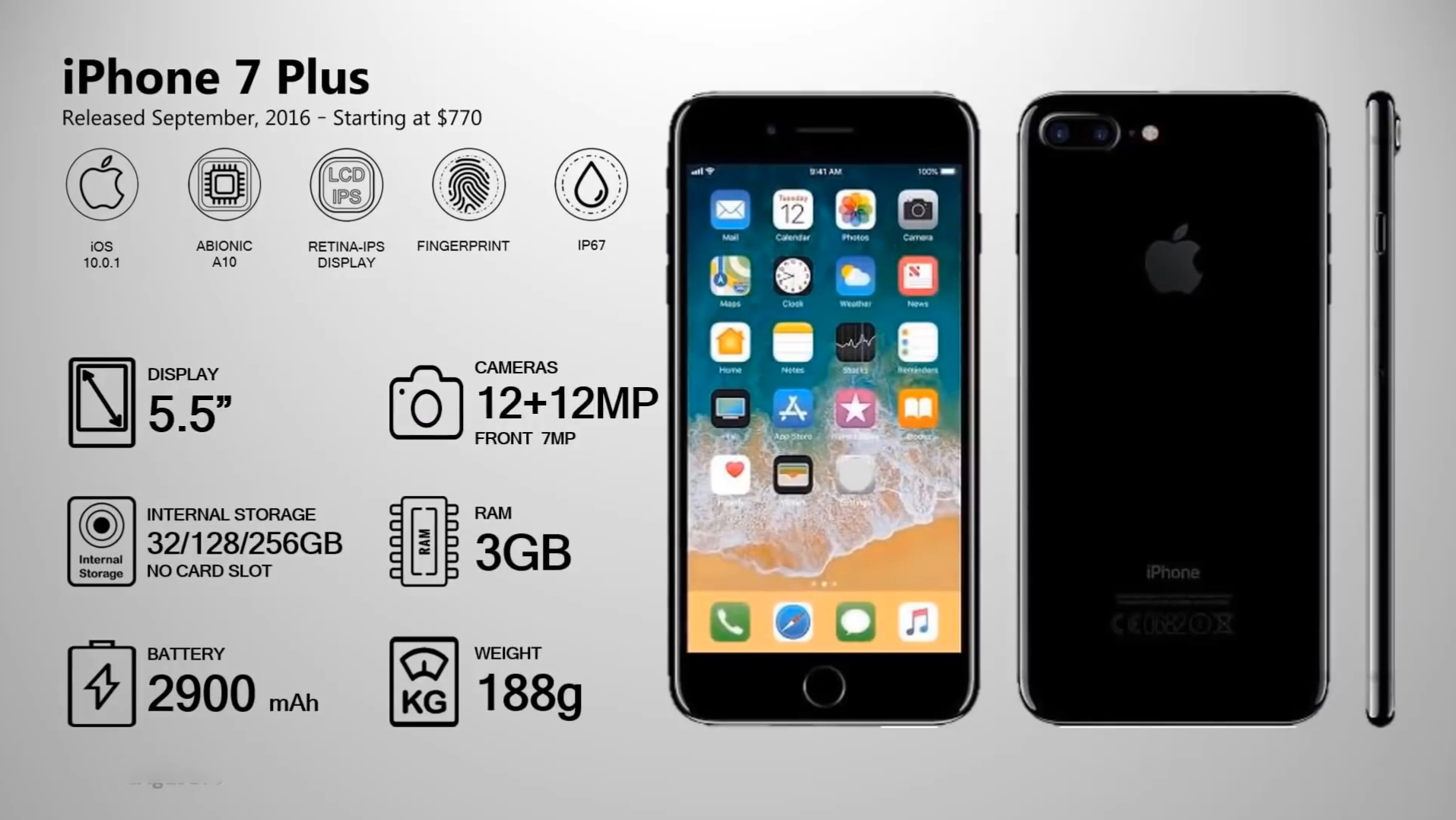
iPhone 8 & 8 Plus: September 22, 2017
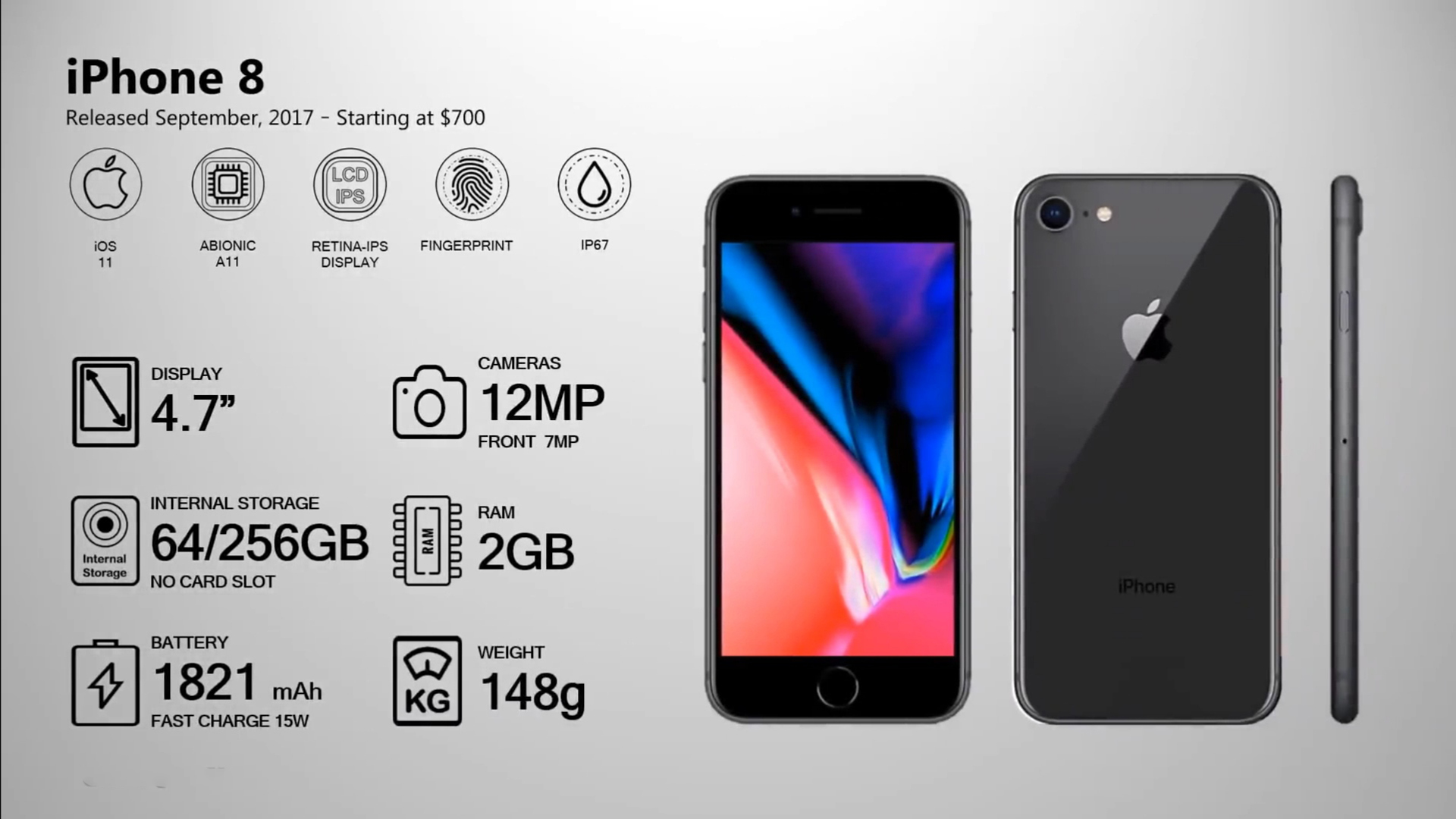
Wireless charging was introduced to the iPhone 8 and 8 Plus with the glass cover at the back of the iPhone.The camera was amazing, with enhanced tools for editing and filtering images. True-tone displays improved viewing by automatically decreasing blue-light exposure. Most users eventually got used to not needing a headset jack and started to adapt to wireless technology.
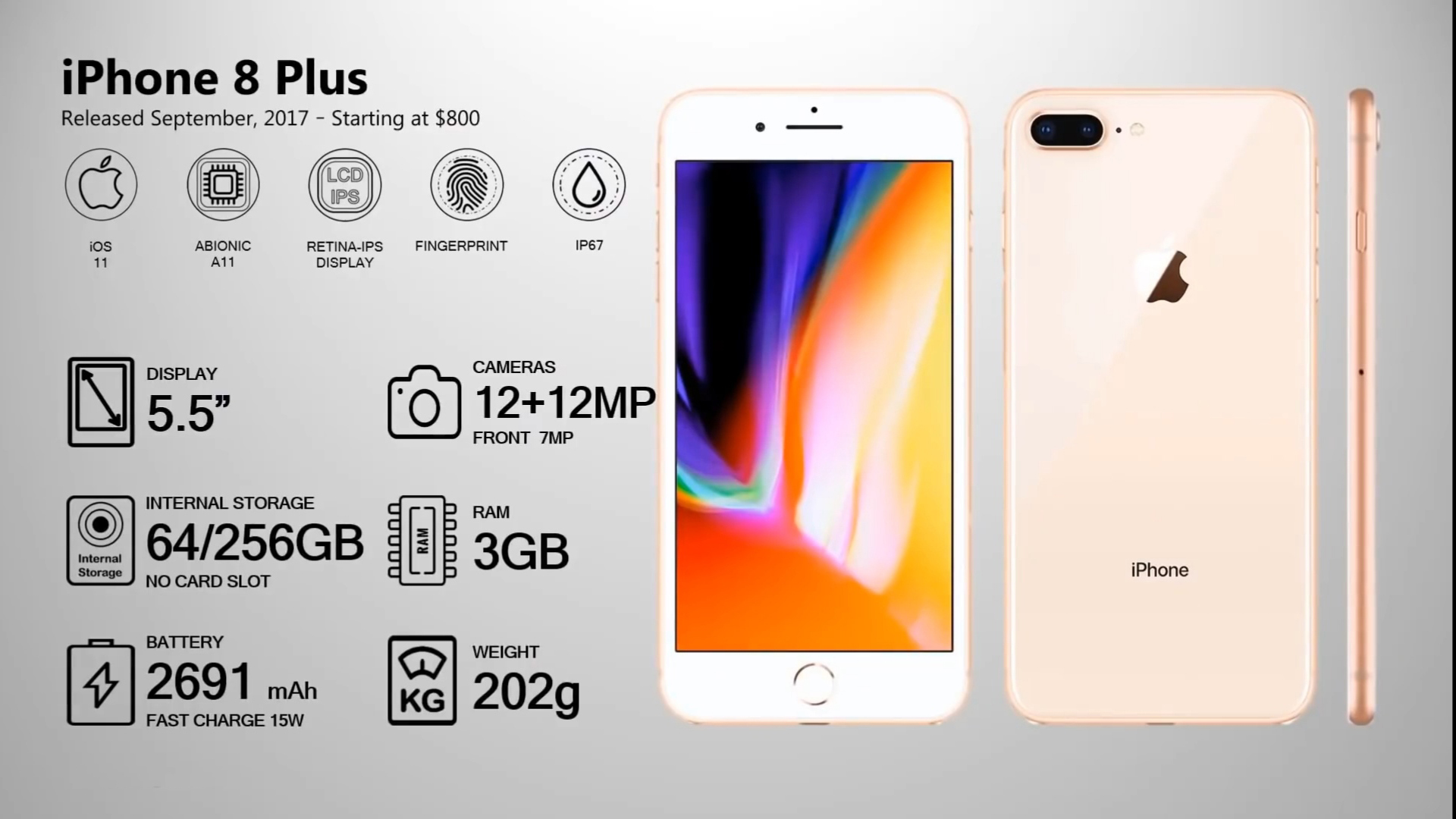
iPhone X: November 3, 2017
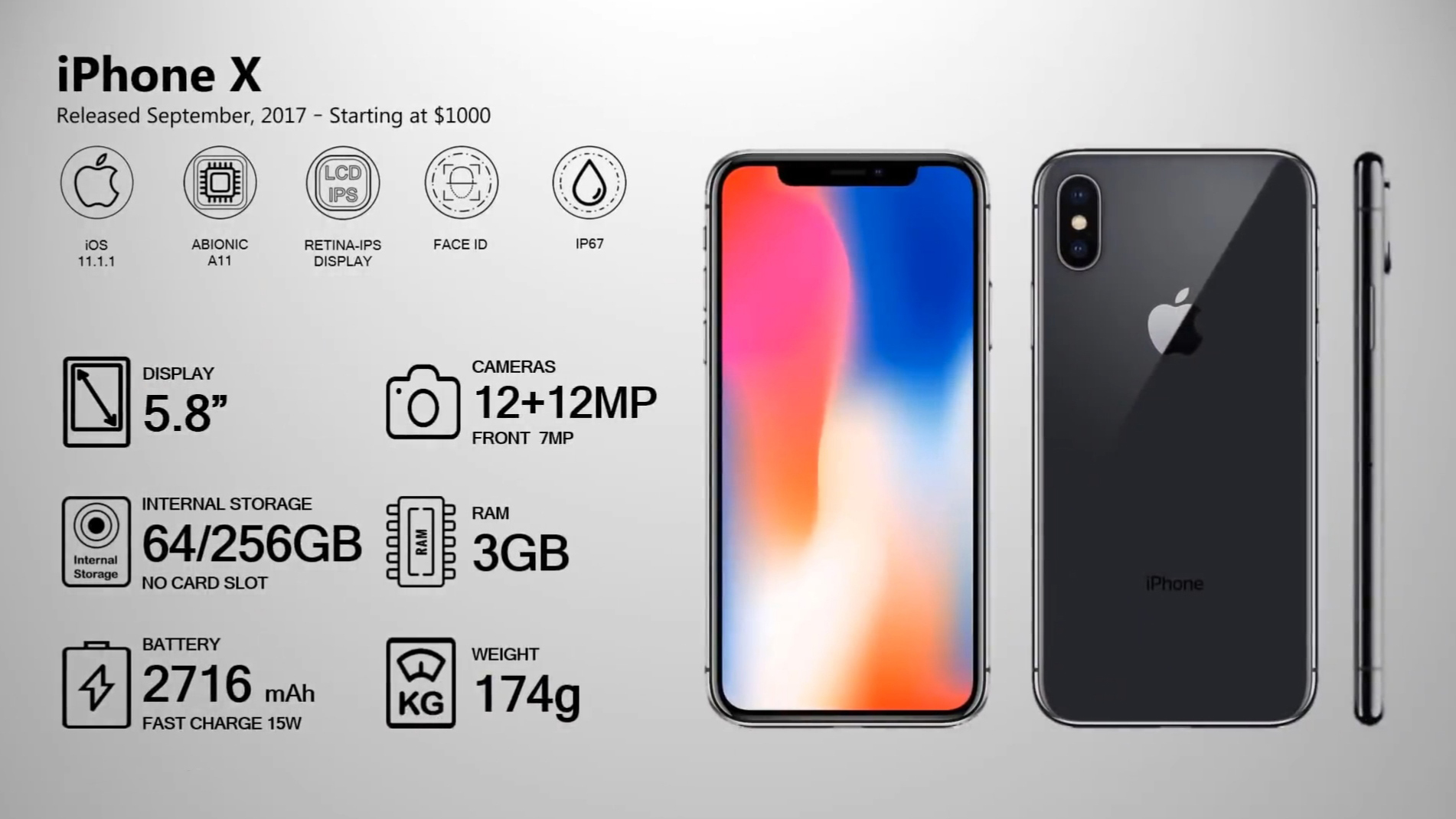
The iPhone X also featured a front-facing camera that allowed us to take stunning selfies in Portrait mode. While other iPhones allow us to take amazing photos, the iPhone X has Portrait mode. We fell in love with it from the first aperture.
iPhone XS & XS Max: September 21, 2018
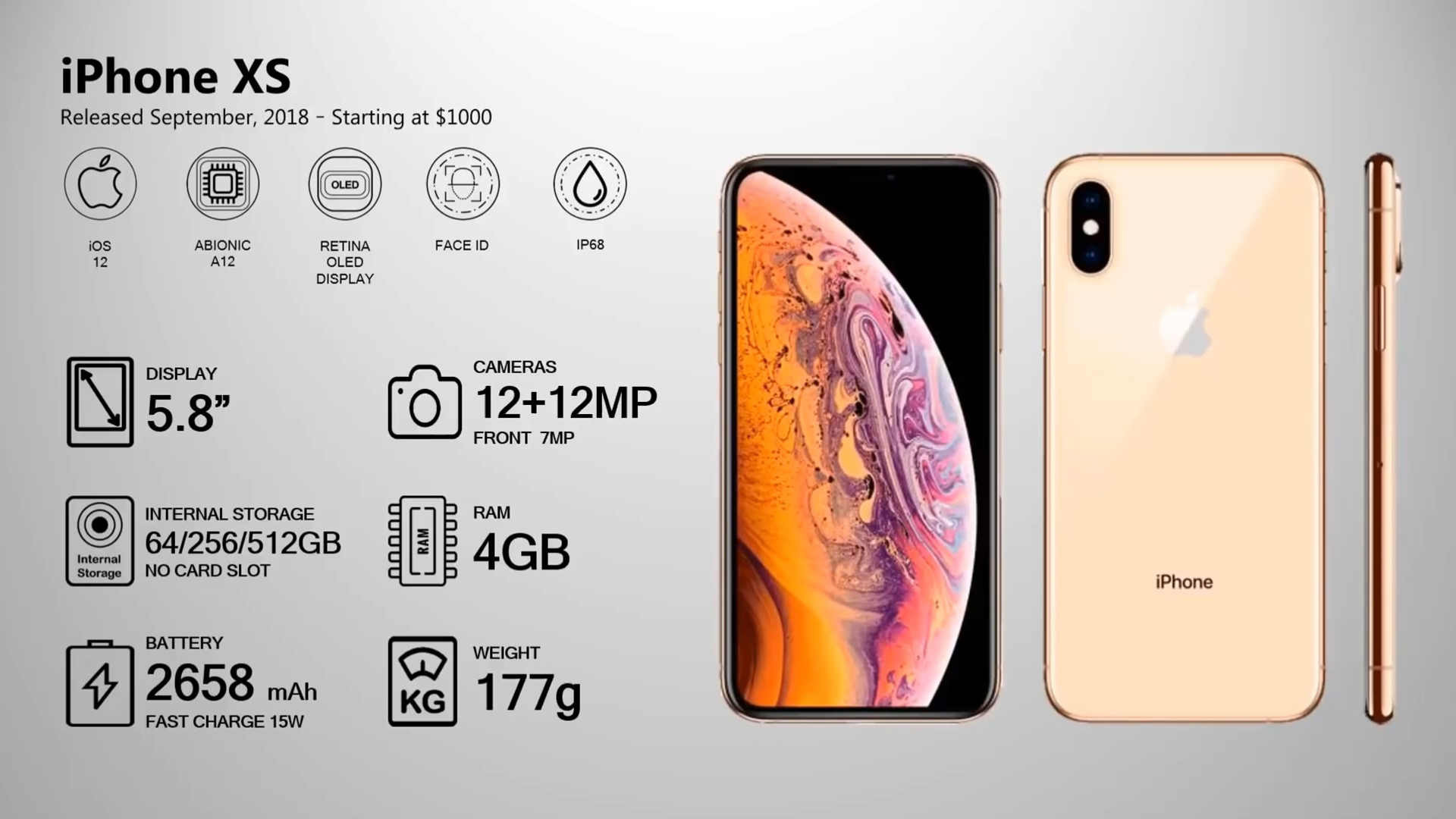
Apple's September 2018 event at the Steve Jobs Theater featured the XS, XS Max, and iPhone 9. These models were named well since they were definite upgrades to the iPhone X. Both models featured a front-facing camera that could be used to take portrait-mode selfies. The displays were stunning from edge to edge. The Super Retina HD HD display made it even more beautiful. The A12 Bionic chip, which increased processing power and decreased battery drain, is the biggest upgrade.
iPhone XS Max Specs & Image
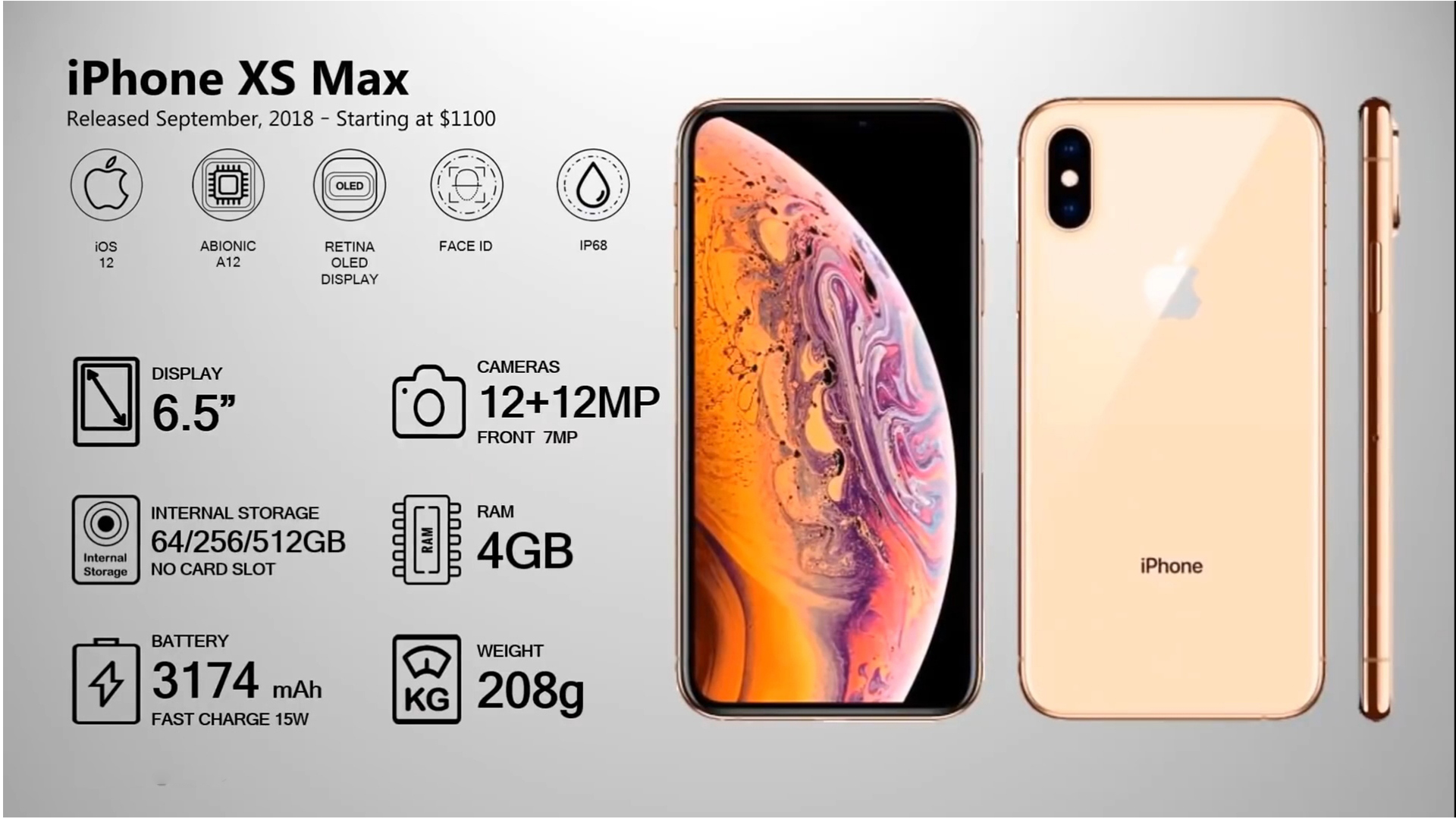
iPhone XR: October 26, 2018
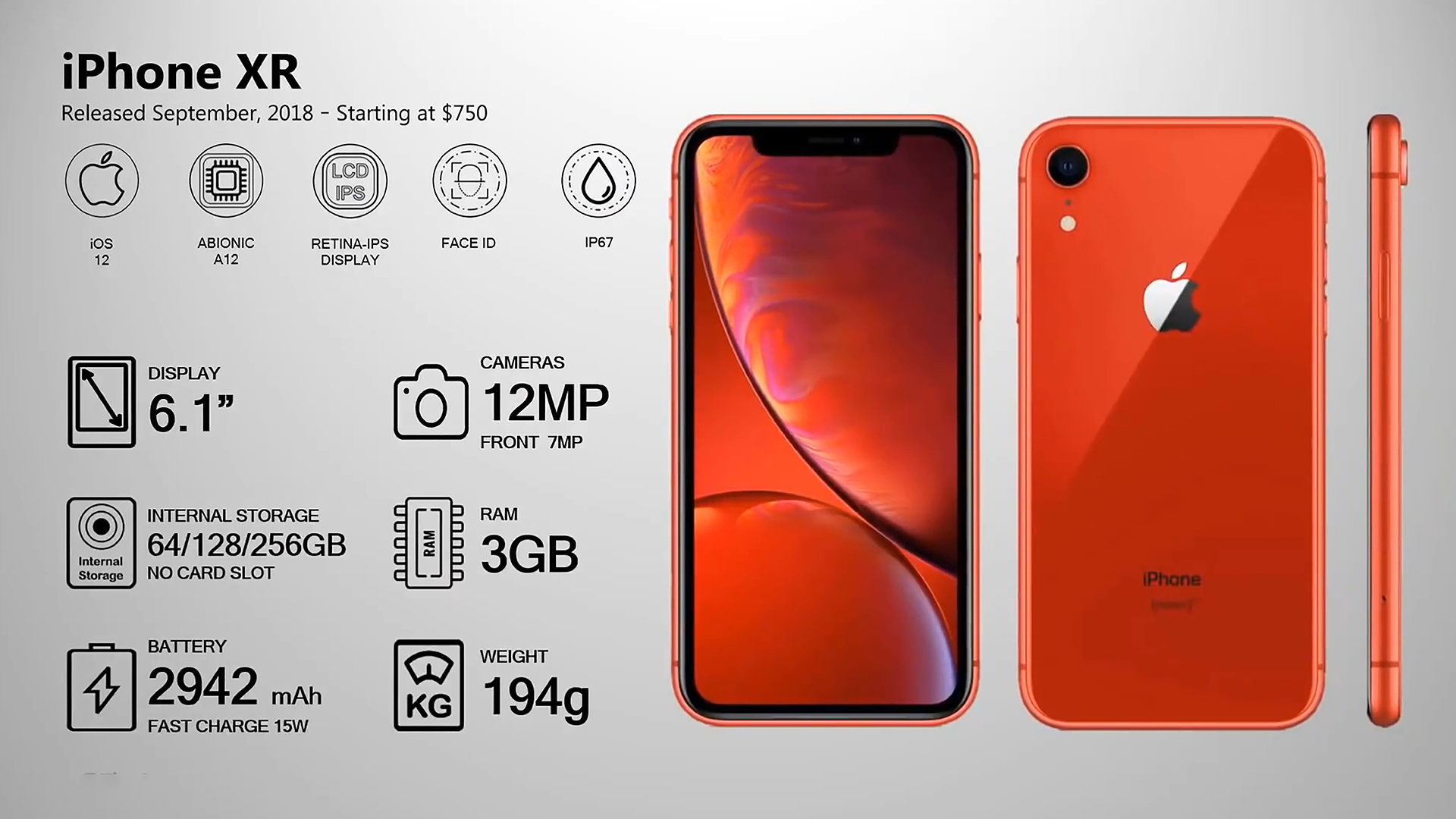
The iPhone XR was also revealed at the September 2018 event but wasn't made available immediately. Many people waited for the XR, as it was the cheapest of the new models. These iPhones were smaller and lighter than the XS Max and XS Max, but still larger than the 7 Plus and 8 Plus. Although the display wasn't as sharp as the XS Max and XS Max models, it was still crisp enough with the Liquid Retina HD display. This model had a front-facing camera and was available in a wider range of colors than either the XS Max or XS Max.
iPhone 11: September 20, 2019
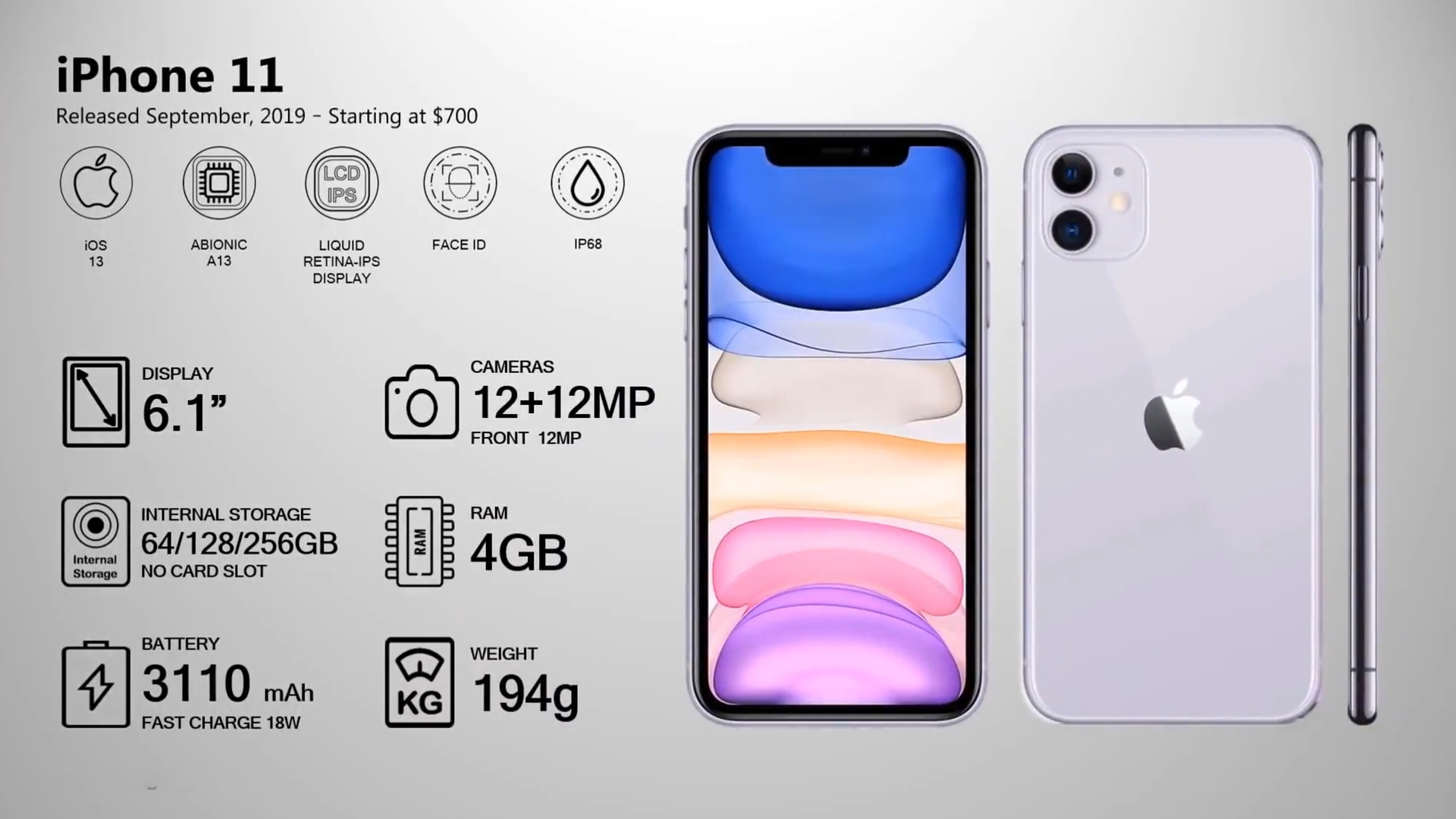
Although the iPhone 11 is the cheapest of Apple's annual lines, it still offers enough new features that it could be the most-loved iPhone in 2019. It features a 6.1-inch Liquid Retina screen and six vibrant colors. The 11's second camera, 12MP, features wide and ultra-wide lenses.
iPhone 11 Pro & Pro Max: September 20, 2019
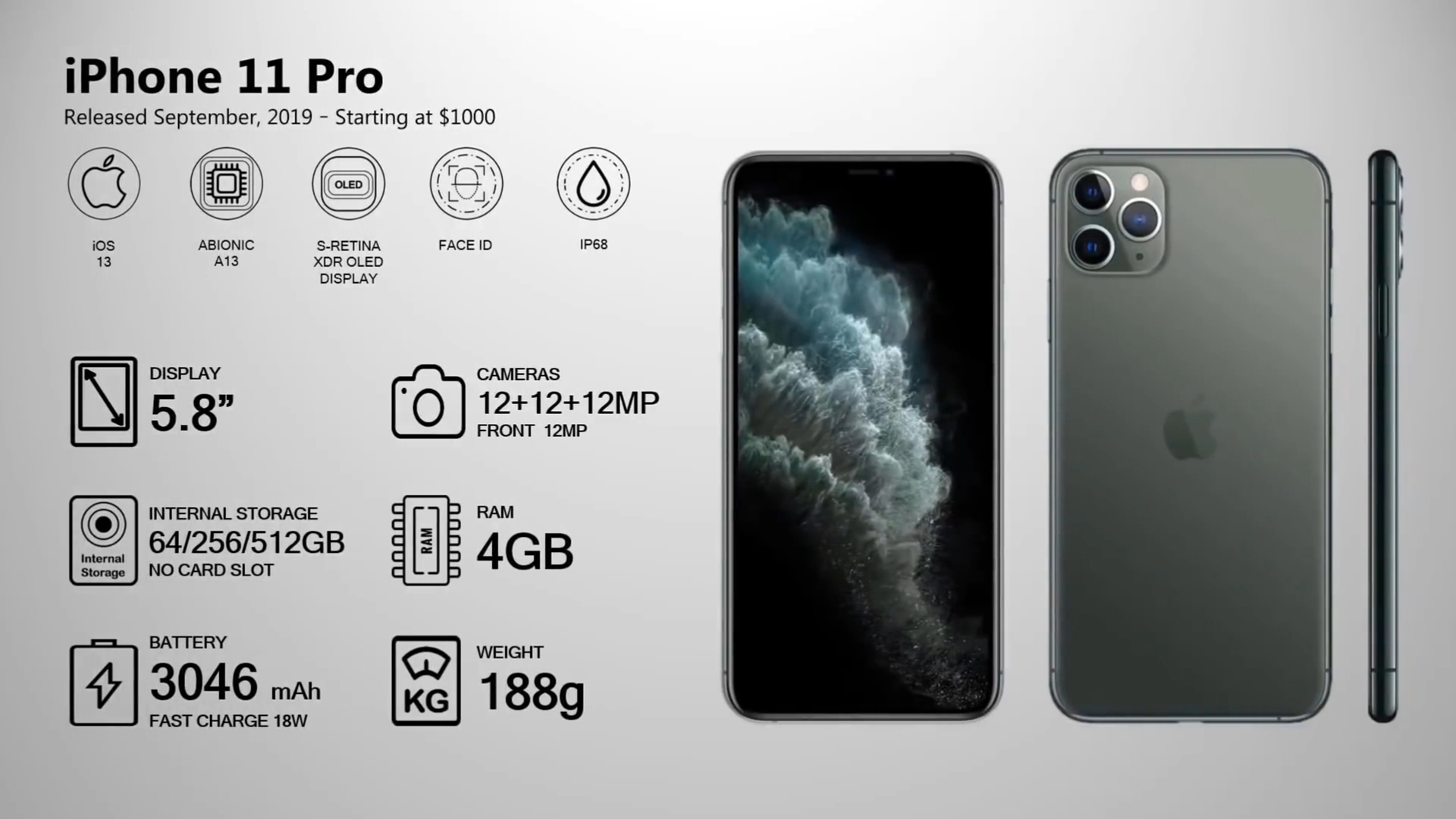
The iPhone 11 Pro is the perfect phone for Apple customers who want a smaller phone but a high-quality display. Apple's 5.8-inch Super Retina XDR LCD display is the clearest and crisp to date. The phone comes with not just two but three 12MP HDR camera lenses. These lenses offer wide, ultra-wide, and telephoto lenses. Although the color options on this phone are muted compared to the iPhone 11, you can always add a flashy cover!
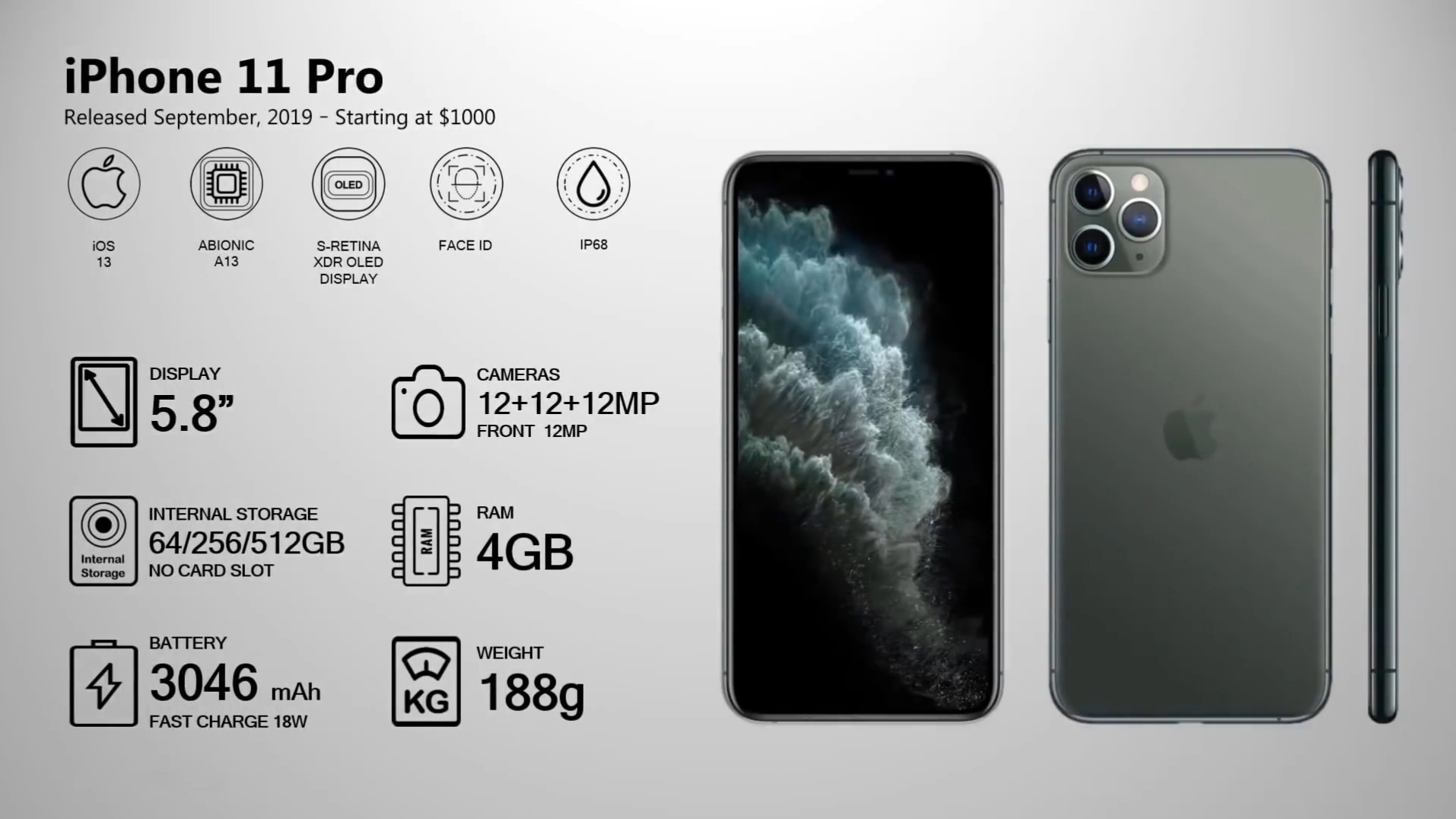
The iPhone 11 Pro Max is Apple's most expensive and largest phone in 2019. The display is Apple’s Super Retina XDR. It measures 6.5 inches. The Pro Max has the same three-lens camera setup and the same color options as the 11 Pro. This makes size almost the only difference between these devices.
iPhone SE (second generation): April 24, 2020
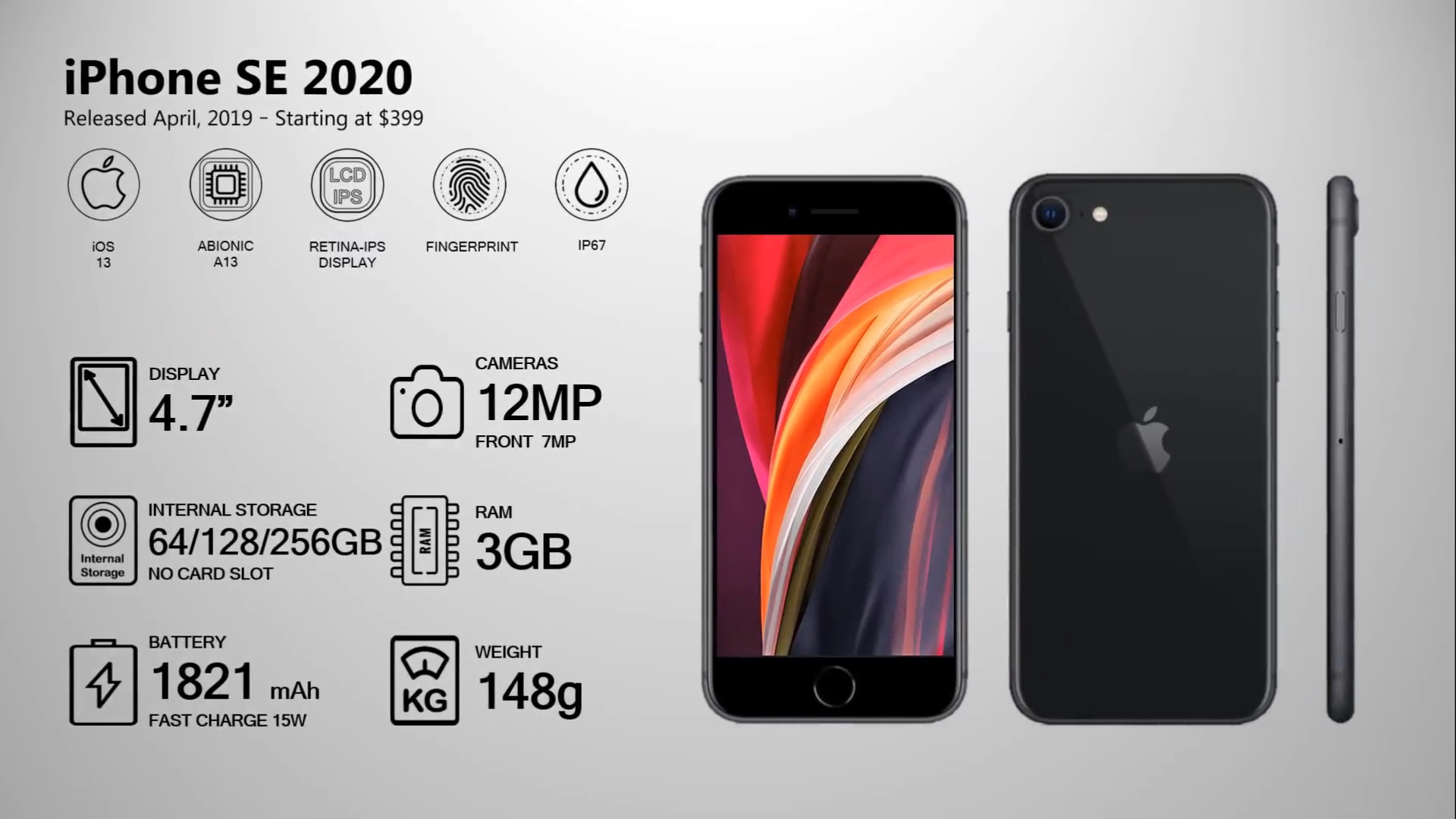
The 2020 iPhone SE, the second in its class, is beloved by those who like smaller iPhones.Apple's throwback iPhone takes cues from the past. Retina HD display at 4.7 inches and a Touch ID Home button bring back the original iPhone SE. The price is also comparable. The second-generation SE features many of Apple's most premium iPhones including the A13 Bionic chip and an advanced camera system with Depth Control and Portrait mode. It also has wireless charging and long battery life.
iPhone 12 mini: November 13, 2020
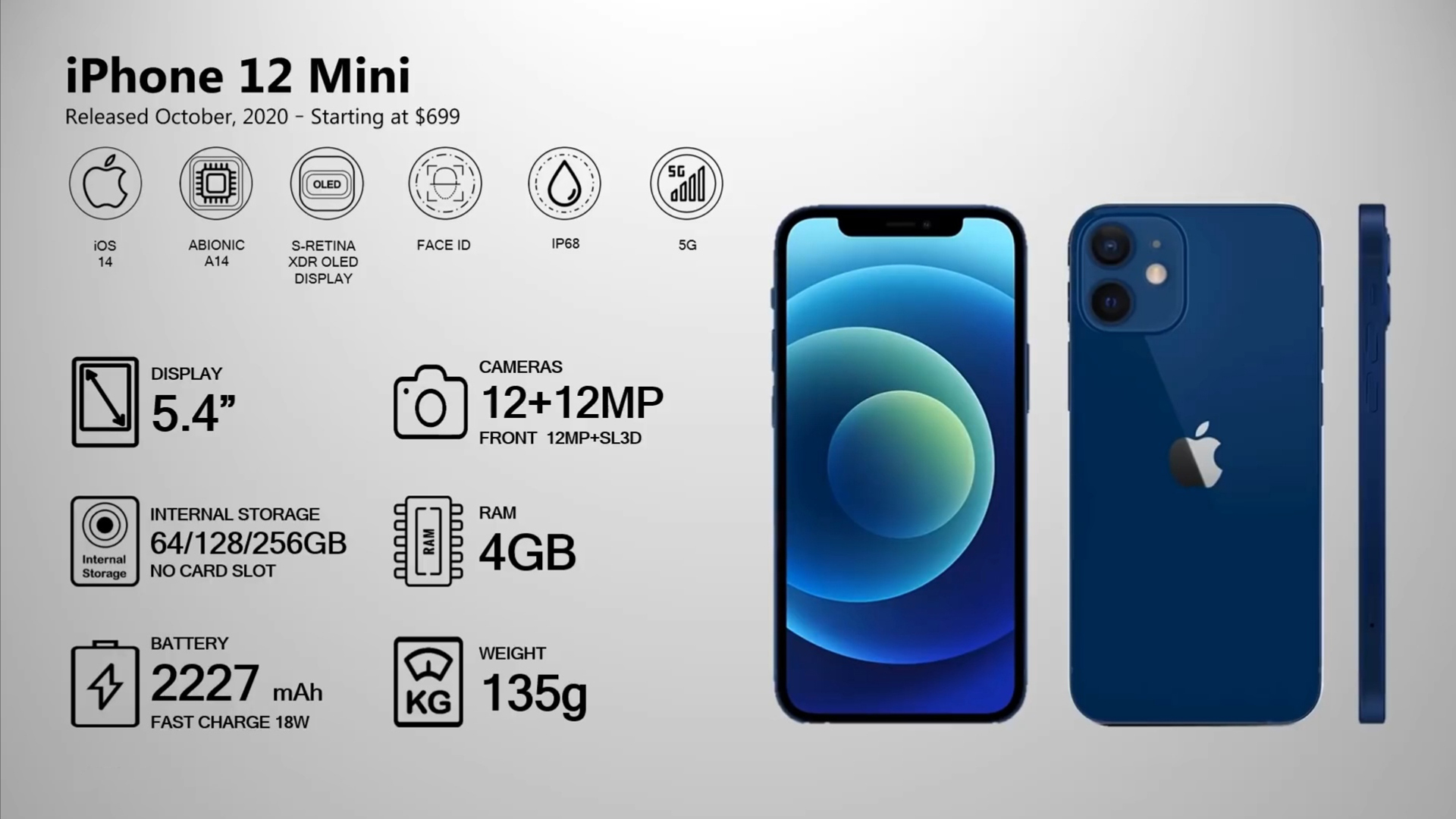
The iPhone 12 mini is an incredibly small, but very powerful addition to Apple's iPhone line-up. The iPhone 12 mini is incredibly thin at 5.4 inches. It also features the A14 Bionic chip, which provides a significant performance boost over previous models. The iPhone 12 mini also includes Apple's Super Retina XDROLED OLED display, a variety of camera upgrades, and a dual-lens arrangement. The iPhone 12 mini has 2 hours less battery life than the iPhone 12, and this is the only difference between them.
iPhone 12: October 23, 2020
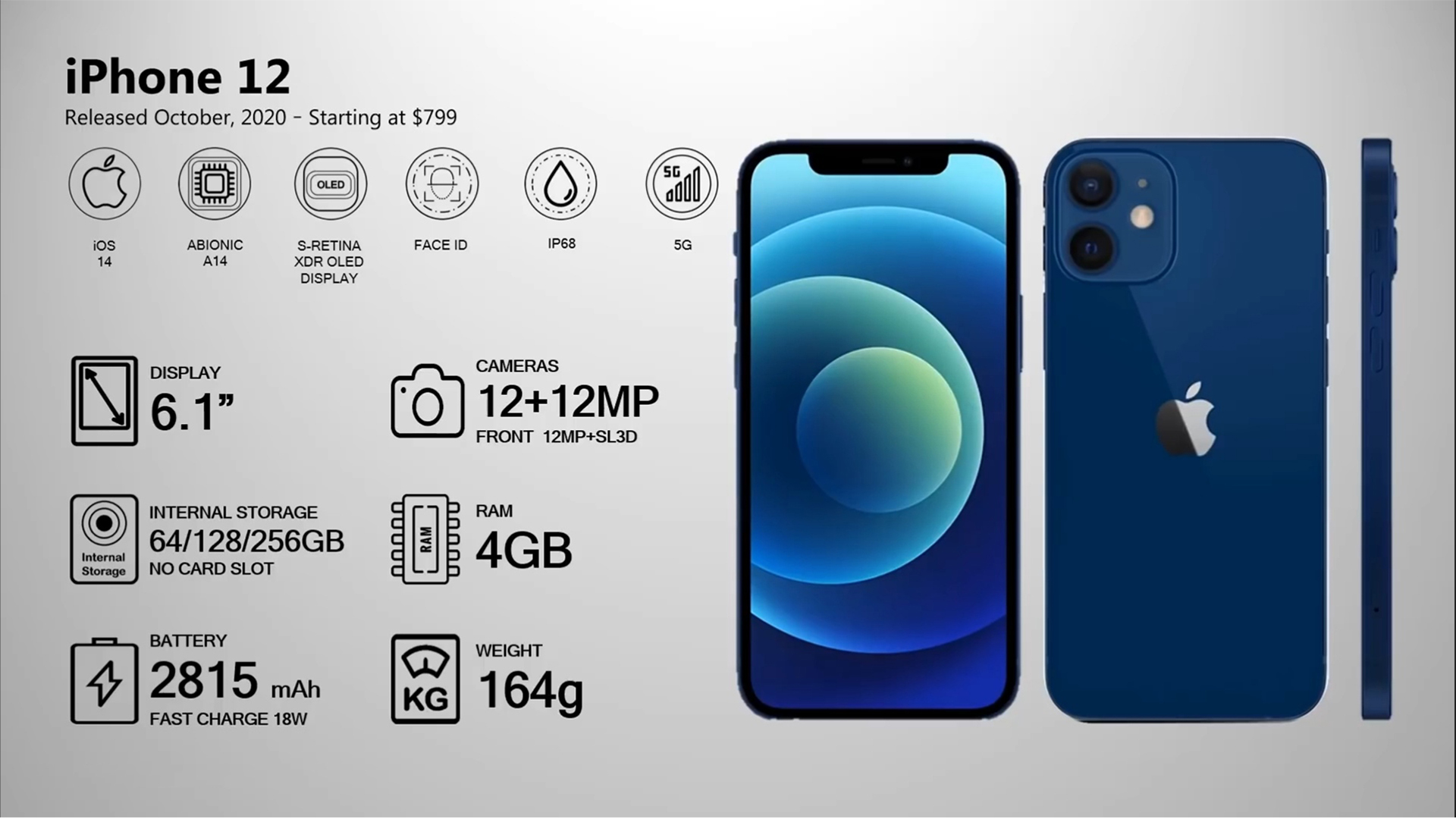
The 6.1-inch iPhone 12 has the exact same features, camera specs, and processing abilities as the 12 mini. However, it's expected to have a 17-hour video playback, compared with the iPhone 12 mini's 15. This mid-range model comes with a dual-lens camera which is enough for most everyday users. Apple made impressive upgrades to its higher-end iPhone 12 Pro phones and iPhone Pro Max phones for users who use their iPhones for their camera capabilities.
iPhone 12 Pro: October 23, 2020
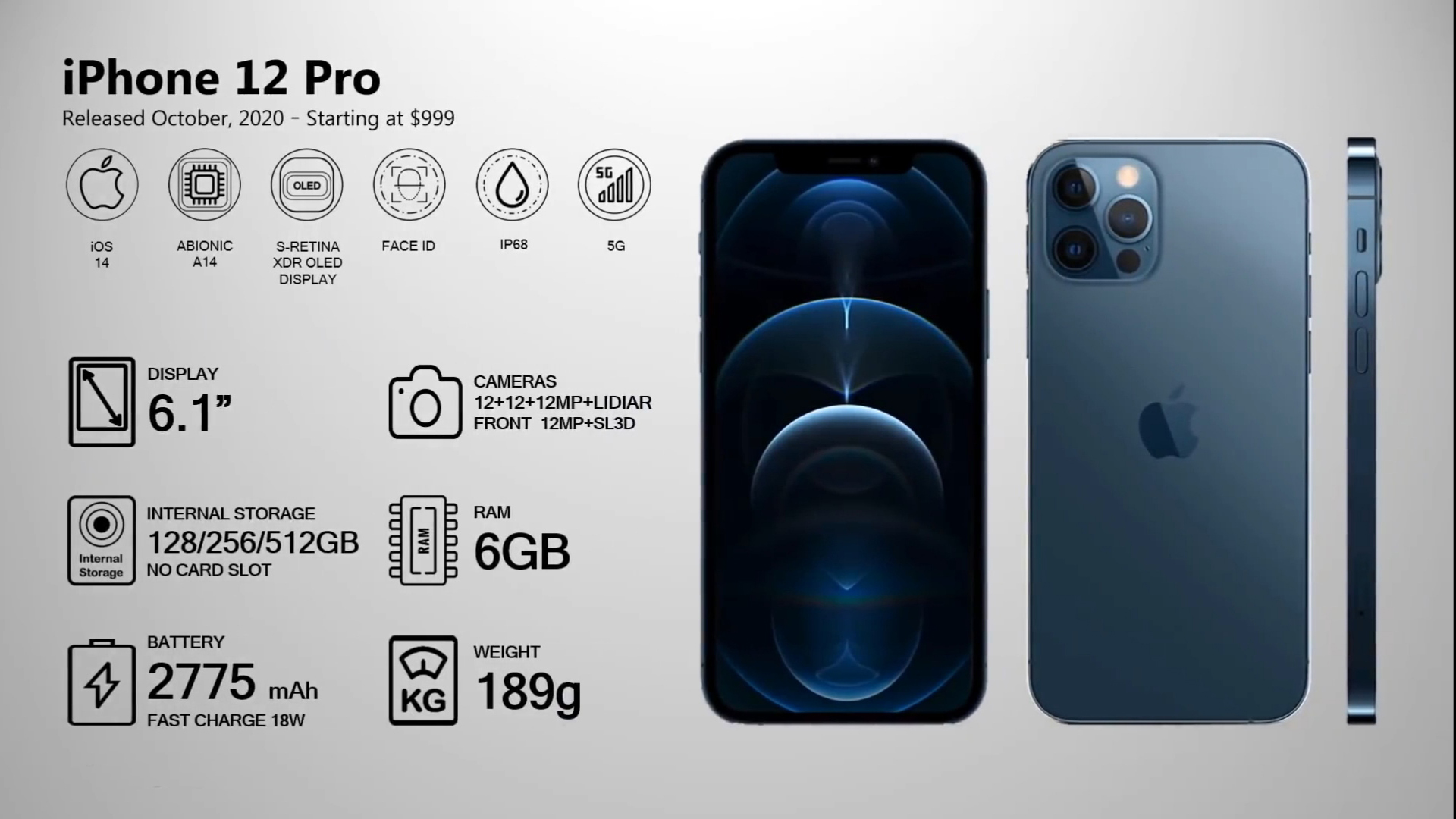
The iPhone 12 Pro has a more sophisticated camera and color upgrade than the 12 and 12 mini. However, it comes with the same screen size as the iPhone 12 and all of the basic features found in the budget models. The 2020 iPhone 12 Pro model will feature a triple-lens setup, similar to the iPhone 11 Pro models. However, it also features LiDAR scanning, Night Mode improvements, enhanced zoom range, and lens functions. The fastest apertures ever used in an iPhone are on both the iPhone 12 Pro models. Apple has also added RAW photos to enhance pro editing capabilities and included Dolby Vision at 60 frames per second on the Pro models.
iPhone 12 Pro Max: Nov 13, 2020
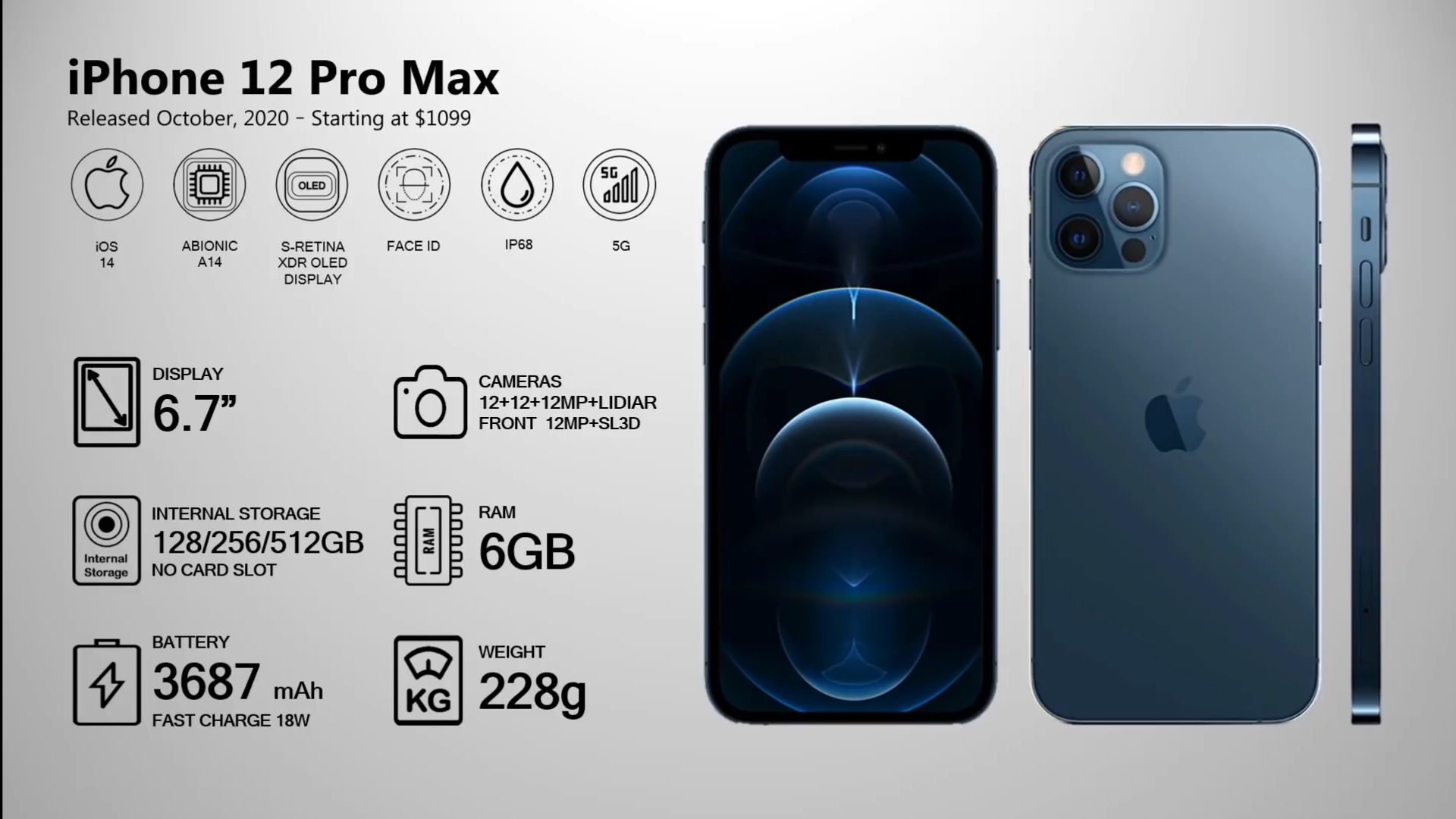
The iPhone 12 Pro Max has all the same benefits as the 12 Pro but is larger and features some improvements. The Pro Max's 6.7-inch screen claims an 87 percent increase in its low-light performance over the iPhone 11 models. It also features 5x zoom which is great for professionals and those using their iPhones for near-professional photography. This iPhone's most distinctive feature is its large screen.
iPhone 13: September 24, 2021
The iPhone 13 line's base model maintains many of the design features (re-)introduced in the iPhone 12 series but comes with a 20 percent smaller notch, accommodated by a new camera layout. The camera has undergone considerable enhancements because of the A15 chip, which is an advance over the iPhones from the previous generation. These improvements include Cinematic mode and Photographic Styles. Battery life is additionally improved for this model, and it comes in the following colors: pink, blue, midnight, starlight, and PRODUCT(RED). A big point for the iPhone 13 is the price point. It has a similar starting price to the iPhone 12 when it first came out, but its base model has twice the storage. The screen size remains equivalent at 6.1 inches. iPhone 13 Price in Nepal is 137900 for 128GB and is also available to buy on EMI Service for up to 18 months.
iPhone 13 Mini: September 24, 2021
Like its bigger siblings, the iPhone 13 mini runs on Apple's A15 Bionic chip, making it a powerhouse in a small package. Its battery life has improved up to an hour and a half each day over the iPhone 12 mini. like other iPhone 13 models, the mini features big camera improvements, and therefore at a maximum storage capacity of 512 GB, it has the most storage space of any small model. With a 5.4-inch screen, it has similar physical dimensions and design to the iPhone 12 small. It features equivalent color options because the iPhone 13 and a starting price of $699 for 128 GB in the USA but the iPhone 13 Mini price in Nepal is 120900 for 128GB.
iPhone 13 Pro: September 24, 2021
Despite having a 6.1-inch Super Retina XDR display with Pro Motion, the iPhone 13 Pro's main selling point is the inclusion of a Telephoto camera, in addition to the Wide and Ultra Wide cameras that accompany the iPhone 13 and iPhone 13 mini. It provides a 1 TB model for greater storage than any previous iPhone and has a LiDAR scanner for Night Mode photography. It needs it, considering all the new camera features bring pretty bulky file sizes. it's also powered by the A15 chip and comes in silver, graphite, gold, and sierra blue. iPhone 13 Pro price in Nepal is 174900 for 128GB.
iPhone 13 Pro Max: September 24, 2021
The iPhone 13 Pro Max offers everything the professional does, but bigger. Its screen measures 6.7 inches diagonally, the same size as the iPhone 12 Pro Max. It, just like the remainder of the iPhone 13 line, may be a bit heavier and thicker than its predecessor, despite sharing equivalent dimensions otherwise. additionally to getting a chip upgrade to the A15, the iPhone 13 Pro Max also gets a further GPU, for a complete of 5. It, too, offers a 1 TB storage capacity option, and Apple says the battery is in a position to support up to twenty-eight hours of non-stop video playback. The iPhone Pro Max is the absolute top-of-the-line model available, but it comes with the most expensive price tag of any iPhone.
There will be four gorgeous finishes for the iPhone 13 Pro and iPhone 13 Pro Max, including graphite, gold, silver, and the brand-new sierra blue. iPhone 13 Pro Max price in Nepal is 189900, 205900 for 256GB.
iPhone Generations to return
As of fall 2021, there are a complete 13 series of the iPhone, and most releases included multiple models. Apple has released a complete 33 iPhones over the years, including the newest iPhone 13 line and therefore the iPhone SE (second generation). We've given you an entire check out each iPhone evolution, starting when Steve Jobs unveiled the first iPhone in 2007. As you'll see, the iPhone has skilled tons of changes, from a 16 GB browser to a 1 TB all-in-one camera, workspace, and wall unit.
In the youth, Apple released one iPhone per annum. that gently changed because the releases of the latest models got closer and closer together from 2010 to 2013. With the September rollout, though, Apple released both the iPhone 5s and therefore the iPhone 5c, introducing an era of two iPhone releases per annum. 2017, 2018, and 2019 each saw the discharge of three more iPhone models, then in 2020, the tech giant shocked the planet. Not only did it release the iPhone SE (second generation) in April, but the corporate also unrolled the four iPhones within the 12-series lineup in its delayed fall announcement. At their September 2021 event, Apple revealed the four new phones that comprise the iPhone 13 lineup, the newest phones available from Apple.
Why Ignored Some iPhone Numbers by Apple?
Did you recognize that there's no iPhone 2? After Apple created the primary generation iPhone, the one that came then was all about 3G internet connectivity, therefore the iPhone 2 was skipped. Why did Apple skip iPhone 9? Apple skipped the iPhone 9 and instead released the iPhone X, thus a choice made supported it being released within the 10th year after the very first iPhone release. Apple is understood for doing things its own way, so frankly we're unsurprised.
We loved learning about the history of the iPhone, and that we hope you probably did too! make certain to see back in and stay up-to-date with all the most recent models because the iPhone continues to evolve and grow. If you think that it'd be time for you to upgrade your iPhone to a more modern model, inspect our article on the way to know when to upgrade your phone.
The Evolution of the iPhone Camera
Did the primary iPhone have a camera? It did, but not in a particularly strong or obvious way. Still, it had been better than a disposable camera! the primary iPhone also gave users access to only 16 GB of storage at the most, and 4 GB on the low end. are you able to imagine?
The cameras built into iPhones have always been a serious draw for the devices, and Apple has shown a corporate initiative to continue improving upon iPhone cameras with each release. lately, you'll enjoy incredible detail and professional-level finishing just with the stock camera and photo editing options included together with your iPhone!
We hope this text answers any questions you've got about the evolution of phones in Apple's lineup. This evolution chart will still grow over the years, and we'll be here to stay you updated: from the upcoming iPhone 13 to a hypothetical iPhone 15 and beyond. We might even get an iPhone XX in 2027! What does one think is coming within the Apple telephone timeline? allow us to know your thoughts and guesses below.

 Laptop
Laptop TV & Home Appliances
TV & Home Appliances Cameras
Cameras PC Components
PC Components iPad & Tablets
iPad & Tablets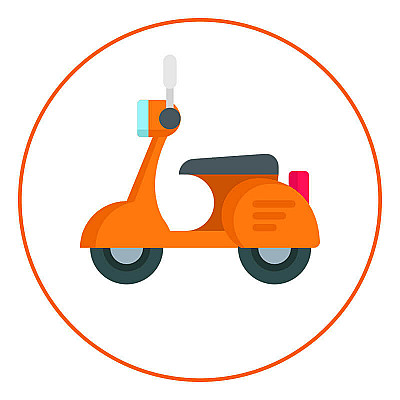 Bike & Scooter
Bike & Scooter Treadmill
Treadmill Electronic Devices
Electronic Devices



